
- Thailand Lantern Festival
- Indonesia(Bali)
- South Korea
- China (HK, Taiwan)
- Itinerary Ideas
- Asia Highlights Travel Reviews
- Thailand Travel Reviews
- Vietnam Travel Reviews
- Cambodia Travel Reviews
- Japan Travel Reviews
- Myanmar Travel Reviews
- China Travel Reviews

- 16-Day Japan and China Discovery Tour
Discover world-famous landmarks such as the Great Wall of China and historical cities such as Xi'an and Kyoto, and witness the vibrant cultures of East Asia, as you experience the best of Japan and China on a 16-day leisurely tour (easily adapted to be a 2-week or 3-week tour). It covers iconic cities like Tokyo, Hakone, Kyoto, Nara, Beijing, Xi'an, and Shanghai. With our carefully-designed itinerary and expert guides, this adventure tour is sure to create unforgettable memories and a comprehensive view of the Far East. Come with us and have the journey of a lifetime!
- Best For: First-timers, families, food enthusiasts, lovers of Asian culture
- Departure date: up to you
- Sample Price: from US$ 6,699 each (2 per room); 4-6 persons, save US$ 400 each!
This is an ideal tour for first-time visitors and families to both Japan and China. Sign up for your favorite part of the tour or simply treat the whole tour as inspiration, designing each element specially for you.
Discover real reviews of Highlights Travel Family 's best-rated service across trusted platforms.

Enter into the history of China and Japan by visiting UNESCO sites and discovering their hidden corners.
Taste the exotic savory flavors of east asia., make your own terracotta warriors after finding out the secrets of the terracotta army., delight in the captivating panorama of tokyo city from the heights of the renowned sky tree tower ., experience the breathtaking scenery of hakone from multiple perspectives., listen to the echoes of history while cycling or walking on the ancient xi'an city wall ., dress in a traditional kimono to truly experience the authentic allure of kyoto., take a leisurely stroll through nara park and interact with over 1,200 tame deer., indulge in ultimate relaxation and serenity at a traditional japanese ryokan (inn) with an onsen (hot spring bath) in hakone., hear untold tales of the bund and ascend shanghai tower for panoramic views., have your own guide and private vehicle during the guided day., journey route, itinerary in detail.
We're ready to refine and design your own dream journey based on your preferences! Our team will create a tailor-made Japan and China tour, just for you. The following is to give you an inspirational example of what is the core of Japan and China touring.
Welcome to Japan, a country that uniquely blends ancient traditions with cutting-edge technology. From the bustling streets of Tokyo and tranquil gardens of Kyoto, to flourishing Osaka and the breathtaking cherry blossom season, Japan offers something to delight every traveler.
Savor traditional sushi , ramen , wagyu beef, and hot springs ( onsen ) for a relaxing and rejuvenating experience. With expert guides and a tailored itinerary, your Japan tour would be an unforgettable journey.
After your arrival at the airport, your private driver will welcome you with a name board and transfer you to your hotel. You'll have the rest of the day to relax and explore at your own pace.
Experience an unforgettable day exploring Tokyo with your own private guide:
- Begin your adventure with a visit to Meiji Shrine , where you can witness traditional Japanese weddings and pay your respects to Emperor Meiji.
- Take a stroll along picturesque Omotesando shopping street, famous for its broad tree-lined avenue and flagship stores of the world's top fashion brands.
- Visit iconic Senso-ji temple in Asakusa, one of Tokyo's oldest and most famous Buddhist temples. Take in the striking architecture and immerse yourself in the vibrant atmosphere of this cultural hub.
- Riding the elevator up the magnificent Tokyo Skytree offers you a chance to marvel at the city's awe-inspiring panorama from its high-altitude observation decks.
- Finally, lose yourself in the energetic streets of Shibuya , home to the famous Shibuya Crossing and an abundance of shopping and entertainment options.
Embark on a memorable journey through Tokyo's most iconic attractions:
- Begin by immersing yourself in the vibrant atmosphere of the Tsukiji Fish Market , renowned for its vast array of seafood and bustling market life.
- Elevate your culinary skills with an authentic sushi-making experience , led by a local sushi chef. Savor the exquisite flavors of your handcrafted sushi during a delightful lunch, while basking in the satisfaction of your newfound talent.
- Unwind and appreciate the tranquil beauty of Hama-rikyu Gardens , one of Tokyo's most stunning traditional Japanese gardens.
- Immerse yourself in the pulse of Japan's dynamic pop culture at an anime-themed cafe ! A delightful escapade into a colorful, animated universe brimming with vibrancy and excitement!
- Embark on an effortless journey to Hakone Yumoto station from Shinjuku station using your Hakone Freepass and Romancecar ticket. Enjoy a relaxing 90-minute direct journey to your destination.
- With the hassle of transportation taken care of, you have the rest of the day to unwind and explore at your own pace. Soak in the beauty of the surrounding nature or indulge in the area's famous hot springs for an ultimate relaxation experience.
Unleash the full potential of your Hakone Freepass and explore all that Hakone has to offer! Enjoy the freedom to get on and off various regional transport at your leisure, with the added benefit of discounted admission to multiple attractions in the region.
- The Hakone pass covers eight different forms of transportation, including trains, buses, cable cars, cableway, and sightseeing cruise, making it easy to see all the major sights of the region.
Alternatively, relax at your hotel and soak in the rejuvenating hot spring bath after a day of travel. Take advantage of the luxurious amenities and soak up the stunning scenery around you.
In the morning, make your way to Odawara station using your Hakone Freepass and use the train ticket to board the Shinkansen to Kyoto.
- On arrival at Kyoto station, make your own way to your hotel using your Shinkansen ticket.
- The rest of the day is free time.
On the seventh day, we would explore the former imperial capital of Kyoto with a knowledgeable local guide and have your own private vehicle to visit some of its World Heritage Sites:
- The day begins with a visit to Kinkakuji Temple , also known as the Golden Pavilion. Originally built as a retirement villa for a shogun, this iconic temple was later converted into a Buddhist temple, making it one of Kyoto's most famous and revered landmarks.
- Don't miss the chance to explore Nijo Castle , an ornamental castle built by the founder of the Edo Shogunate as his Kyoto residence. Surrounded by stunning gardens, this castle's main building was completed in 1603 and is renowned for its unique architecture, decorated sliding doors, and 'chirping' nightingale floors.
- Take a leisurely stroll down Nishiki Market , a narrow, five-block long shopping street lined with over a hundred shops and restaurants. Known as "Kyoto's Kitchen", this vibrant retail market specializes in all things related to food, including fresh seafood, knives, and cookware. There, you can indulge in seasonal delicacies and Kyoto specialties such as Japanese sweets, pickles, dried seafood, and sushi.
Choose from a wide array of traditional kimonos and let local experts style you to perfection. Seize this exceptional opportunity to navigate local terrains in genuine Japanese garb, stirring a deeply transformative travel experience.
Take a serene stroll up to the " Pure Water " Temple , Kiyomizu, for a immersive cultural plunge. Soak in panoramic Kyoto vistas from its nail-free, 13-meter-high Main Hall veranda. Even amid restorations, this quintessential Kyoto marvel stands a breathtaking sight to behold.
Journey from your hotel to the historic city of Nara, under the guidance of a local expert. Nara, a cradle of heritage, was Japan's capital in the 8th century for 74 years. The testament to this glorious era lives on in the myriad of remaining temples and shrines, quietly narrating tales of the past.
- Experience the artistry of Matcha at Kyoto's centuries-old tea house in Uji. Revel in a day interspersed with tradition, history, and exquisite green tea flavors.
- Take a leisurely stroll through Nara Park, also known as Deer Park, where you can interact with over 1,200 tame deer that call the park home.
- Your journey continues to the grandeur of Todai-ji Temple , a marvel of wood that stands as the world's largest, cradling within it Japan's most magnificent Buddha.
- Quench your thirst at a traditional sake brewery , where you can sample different types of sake and discover your favorite.
- On the way back from Nara, visit Fushimi Inari Shrine , which was featured in the movie Memoirs of a Geisha . This shrine is home to over 10,000 red torii gates that form a beautiful path up the mountain behind the temple.
Day 9 of our Japan adventure is your chance to relax or explore Osaka on your own before your private driver takes you to the airport for your flight to Beijing, the capital of China.
Upon arrival in Beijing, your local guide will meet you and transfer you to your hotel for a well-deserved rest.
Ready for Beijing? Let's begin the day trip by visiting the symbol of new China — Tian'anmen Square .
- From there, proceed to the Forbidden City , the largest and best-preserved ancient imperial palace, with a rich 500-year history. While most tour groups only visit the six halls on the central axis, your private guide will help you explore 12 carefully-selected places to fully experience the grandeur and beauty of this historic site.
- Indulge in a delicious lunch of Beijing Roast Duck , where you can watch the chef's exquisite cutting skills, savor the crispy duck skin, and learn the proper way to eat it.
- After lunch, spend a leisurely afternoon exploring the charming hutong alleyways , where you can soak up the local atmosphere and learn about the daily lives of Beijing residents.
- Start the day's touring at the Temple of Heaven , where emperors prayed for a good harvest. Arrive early to witness locals practicing martial arts and engaging in other unique activities that you may not see in your home country.
- In the afternoon, visit Mutianyu , the top-ranked section of the Great Wall on TripAdvisor due to its picturesque scenery and beautifully-restored architecture. Although it is about a 2½-hour drive from downtown Beijing, the stunning views and unforgettable experience make it well worth the journey.
- Marvel at the stunning imperial garden of the Summer Palace , originally the summer retreat of the imperial court and now a peaceful escape from the summer heat.
- Experience China's technological development as you race towards Xi'an on a high-speed train . This is a unique and exciting way to travel and witness the modern advancements of China's transportation system.
- Start your day by uncovering the mysteries of the underground army that dates back to 206 BC at the Terracotta Army Museum . Then, visit a local craftsman's cave dwelling to learn how to make a mini terracotta warrior .
- Return to the city area and visit Xi'an City Wall , which has been guarding the inner city for over 600 years. Walking along the wall provides a stunning view of the city, or you can rent a bike to cycle around the 14 km (9-mile) wall for a unique leisurely experience.
- Explore more of Xi'an's rich history at Small Wild Goose Pagoda, Xi'an Museum and Big Wild Goose Pagoda , then head to the Muslim Quarter to wander through the alleys and savor the local Muslim cuisine.
- In the afternoon, your guide will take you to the airport for your flight to Shanghai. Upon arrival, your Shanghai guide will meet you and escort you to your hotel, where you can rest and recharge for the next day's adventures.
- Experience more than just taking a few selfies on the Bund during our In-Depth Bund Culture Discovery Tour, where you will travel back in time to the golden age of the Bund in the 1920s.
- Explore some of the old Bund buildings and listen to their fascinating stories. Then, ascend the tallest building in China, Shanghai Tower , where you can enjoy a breathtaking panoramic view of Shanghai and witness the vastness of the largest city in China.
On the last day of this itinerary, your private car, driver, and guide will be awaiting you at your hotel lobby, ensuring a timely arrival at the airport.
As you sit back and relax, they will provide check-in assistance and escort you to the correct security gate. Experience stress-free travel and a delightful journey home as they cater to your every need.
Ideas for Making This Trip Uniquely Yours
Special experiences can be added to brighten a honeymoon trip, a family vacation, a birthday, or satisfy personal interests.
Hand-Picked Hotels
We have selected hotels with different styles and for different budgets. Let us know your preferences and we will help you find the right one.
Tour Price:
- The price is based on a private tour for 2 people during the low season.
- The price varies based on program, travel date, number of people.
- We could also price a tour including both 4-star and 5-star hotels for you.
- We accept payments in multiple currencies (GBP, AUD, CAD, EUR...).
Price Includes:
- Privately-driven air-conditioned vehicle with ample space (except where stated)
- English-speaking local guide for the sightseeing
- Attraction tickets and itinerary activities
- Accommodation for all nights
- Flights/trains between itinerary cities
- Hotel breakfasts and itinerary lunches/dinners
- 24/7 helpline while touring
- Governmental taxes
Price Excludes:
- International flights not mentioned in the itinerary
- Meals not mentioned in the itinerary
- Overweight luggage more than 20 kg per person
- Visa fee, if applicable
- Tips for guides and drivers
- Personal expenses
Tour code: ah-ea-1
Inquire now! Your 1:1 travel consultant will reply within 1 working day.
How would you travel.
Adults number (age ≥ 18 years old)
Children number
10-17 yrs old
3-9 yrs old
0-2 yrs old
What's your hotel choice?
When would you travel.
I am also available on:
Why Asia Highlights (10,000+ reviews & 98.8% 5-star rating)
- Save Your Time:
- Less research, more enjoyment!
- Real-time 1V1 expert planning
- Maximize Your Flexibility:
- Personal local guide and ride
- Explore at your own pace
- Celebrate Your Journeys:
- Specially-crafted family adventures
- Celebrate milestones with style!
- 16-Day South Korea and Japan Cultural Adventure Tour
- 3-Week China and Vietnam Adventure Tour
- 20-Day China (including Tibet), Nepal, and India Tour
- How to Plan a 2-Week Itinerary in Japan and South Korea
- How to Plan a 12-Day Trip in Japan and South Korea
- How to Plan a Trip to China and Japan
- Plan an Awesome Trip to India, Bhutan and Nepal (6 Tips)
- Southeast Asia Weather in January, Where to Go
- Southeast Asia Weather in February, Where to Go
- Southeast Asia Weather in March 2024, Where to Go
- Southeast Asia Weather in April 2024, Where to Go
- Southeast Asia Weather in May 2024, Where to Go
- Southeast Asia Weather in June 2024, Where to Go
- The 6 Best Places to Visit in Southeast Asia in July (2024)
- The 6 Best Places to Visit in Southeast Asia in August 2024
- Southeast Asia Weather in November 2024, Where to Go
- Southeast Asia Weather in December 2024 & Best Places to Go
Get Inspired with Some Popular Itineraries
At Asia Highlights, we create your kind of journey — your dates, your destinations, at your pace. You can have any trip tailor made for your travel.
More Travel Ideas and Inspiration
Sign up to our newsletter.
Be the first to receive exciting updates, exclusive promotions, and valuable travel tips from our team of experts.
Why Asia Highlights
Where can we take you today.
- Middle East
- African Safari
- Travel Agents
- Loyalty Program
- Privacy Policy
Address: Building 6, Chuangyi Business Park, 70 Qilidian Road, Guilin, Guangxi, 541004, China
Skip to content
Your browser does not support JavaScript, or it is disabled.Please check the site policy for more information.
National Report
- Korean Peninsula
- Around Asia
- Manga & Anime
The Asahi Shimbun
China lifts ban on group tours to Japan in time for summer travel
THE ASAHI SHIMBUN
August 10, 2023 at 12:08 JST

China lifted its ban on group tours to Japan on Aug. 10 after a suspension of more than three years due to the novel coronavirus pandemic.
The decision announced by China's Ministry of Culture and Tourism also covered the United States, South Korea and many European countries.
The lifting is expected to be a boon to Japan’s tourism industry as China topped both in tourist numbers and visitor spending before the pandemic.
Chinese group tours to Japan have been on hold since January 2020. Only a limited number of solo travelers have visited the country since the spread of COVID-19.
In 2019, 9.59 million Chinese tourists visited Japan, accounting for 30 percent of foreign travelers.
Tourists from China spent 1.77 trillion yen ($12.30 billion), 36.8 percent of the total spending by inbound travelers.
The per-capita spending on shopping surpassed 100,000 yen, making China the only country to exceed that lucrative threshold for retail establishments.
Japan eased border restrictions on incoming travelers in October, but Chinese tourists have been slow to return compared with other countries.
The Chinese government has continued to freeze procedures for Japan-bound group tours.
China, which substantially relaxed its zero-COVID policy in December, lifted its ban on group tours to 60 countries in two batches, but Japan has not been included.
Japan and other countries were included in the third group announced on Aug. 10.
In June, the number of Chinese tourists to Japan was about 20 percent of pre-COVID levels, although the overall entry of foreign travelers recovered to about 70 percent.
This year, flights from China increased to Tokyo and Osaka, among other major cities, and airlines are moving to reopen direct services to rural destinations.
(This article was written by Go Takahashi, Anri Takahashi and Kazuki Uechi.)
Related News

About 400,000 Chinese tourists cancel group tours to Japan

Foreign tourists shun Japan over COVID-19 rules, rising infections

Japan sets sights on wealthy visitors to increase consumption

Surge in tourists unlikely with visa, other rules still in place

Japan may let in small groups of tourists in spring in trial run

China travel ban expected to have huge impact on Japan’s economy
Trending Now

Cormorant fishing season starts with a splash in Ehime
June 5, 2024

GSDF sergeant killed in drill on grenade throws in Yamanashi
May 31, 2024

Rainfall records broken across Japan; man dies in Yamanashi
May 29, 2024
Recommended

Stories about memories of cherry blossoms solicited from readers

Cooking experts, chefs and others involved in the field of food introduce their special recipes intertwined with their paths in life.

A series based on diplomatic documents declassified by Japan’s Foreign Ministry

A series on the death of a Japanese woman that sparked a debate about criminal justice policy in the United States

A series about Japanese-Americans and their memories of World War II

Here is a collection of first-hand accounts by “hibakusha” atomic bomb survivors.
Learning English
- Asahi Weekly
In-house News and Messages
- The New York Times
BACK TO TOP
- Site Policy
- Transmission of user information to external service providers(利用者情報の外部送信)
Copyright © The Asahi Shimbun Company. All rights reserved. No reproduction or republication without written permission.
- Media & Industry
- Meetings & Events
- Select Language 简体中文 繁體中文(香港) 繁體中文(臺灣) India (English) Bahasa Indonesia 한국어 ภาษาไทย Tiếng Việt Singapore (English) Philippines (English) Malaysia (English) Australia/New Zealand (English) Français Deutsch Italiano Español United Kingdom (English) Nordic countries(English) Canada (English) Canada (Français) United States (English) Mexico (español) Português العربية Japan(日本語) Global (English)
- India (English)
- Bahasa Indonesia
- Singapore (English)
- Philippines (English)
- Malaysia (English)
- Australia/New Zealand (English)
- United Kingdom (English)
- Nordic countries(English)
- Canada (English)
- Canada (Français)
- United States (English)
- Mexico (español)
- Global (English)
- Fujiyoshida
- Shimonoseki
- Ishigaki Island
- Miyako Island
- Kerama Island
- Tokyo Island
- Koka & Shigaraki
- Hida Takayama
- Ginza, Nihonbashi
- Beppu & Yufuin (Onsen)
- Ginzan Onsen
- Nagasaki Islands

- Kumano Kodo
- Shikoku Karst
- Amami Oshima
- Hachimantai
- Omihachiman
- Aizuwakamatsu

- Diving in Japan
- Skiing in Japan
- Seasonal Flowers in Japan
- Sustainable Outdoors
- Off the Beaten Track in Japan
- Scenic Spots
- World Heritage
- Home Stays & Farm Stays

- Japanese Gardens
- Japanese Crafts
- Temple Stays
- Heritage Stays
- Festivals and Events
- Theater in Japan
- Japanese Tea Ceremony
- Cultural Experiences in Japan
- Culture in Japan

- Local Cuisine Eastern Japan
- Local Cuisine Western Japan
- Local Street Food
- Japan's Local Ekiben
- Japanese Whisky
- Vegetarian and Vegan Guide
- Sushi in Japan Guide
- Japanese Sake Breweries

- Art Museums
- Architecture
- Performing Arts
- Art Festivals
- Japanese Anime and Comics
- Japanese Ceramics
- Local Crafts

- Scenic Night Views
- Natural Wonders
- Theme Parks
- Samurai & Ninja
- Iconic Architecture

- Wellness Travel in Japan
- Japanese Ryokan Guide
- A Guide to Stargazing in Japan
- Relaxation in Japan
- Forest Bathing (Shinrin-yoku)

Experiences in Japan
- Enjoy my Japan
- National Parks
Japan's Local Treasures
- Japan Heritage
- Snow Like No Other
- Wonder Around Japan

Visa Information
- Getting to Japan
Airport Access
- COVID-19: Practical Information for Traveling to Japan
- Anime Tourism
- Countryside Stays
- Accessible Tourism
- Hokkaido Great Outdoors
- Scenic World Heritage in Tohoku
- Shikoku’s Nature and Traditions
- Southern Kyushu by Rail

- Traveling by Rail
- How to Travel by Train and Bus
- JR Rail Passes
- Scenic Railways
- Renting a Car
- Sustainable Travel in Japan
- Travel Brochures
- Useful Apps
- Online Reservation Sites
- Eco-friendly Accommodation
- Luxury Accommodations
- Traveling With a Disability
- Hands-free Travel
- How to Book a Certified Tour Guide
- Volunteer Guides
- Tourist Information Center

- Japanese Manners
- Spring in Japan
- Summer in Japan
- Autumn in Japan
- Winter in Japan
- Cherry Blossom Forecast
- Autumn Leaves Forecast

- Japan Visitor Hotline
- Travel Insurance in Japan
- Japan Safe Travel Information
- Accessibility in Japan
- Vegetarian Guide
- Muslim Travelers
- Safety Tips

- JAPAN Monthly Web Magazine
- Arts & Cultures
- Nature & Outdoor
- Festivals & Events
- Insider Blog
- Things to do
- Local Guides
- Food & drink
- Traditional
- Hokuriku Shinetsu

My Favorites
${v.desc | trunc(25)}
Planning a Trip to Japan?
Share your travel photos with us by hashtagging your images with #visitjapanjp
Travel Japan - The Official Japan Guide
Explore Royal Artwork at The Museum of the Imperial Collections, Sannomaru Shozokan
Go Beyond Japan’s Major Cities: Hokuriku Shinkansen Extension in 2024
Guiding your trip to new adventures in Japan
WONDER AROUND JAPAN
Photo Credit : Guided Cycling Tour Biei
Live to Travel, Travel to Live
Discover how all of Japan is getting behind Expo 2025, coming to Osaka in Japan’s Kansai region
An epic eating adventure.
Memories in the Making
Welcome to the official tourism website of Japan
Unforgettable experiences and breathtaking moments, finding the hidden gems.
Stories & Guides
Explore Japan's vast cultural, eating, drinking, and shopping scenes
Things to Feel
Discover the full range of amazing things to feel across Japan
Tohoku Colors
Experience the seasonal and cultural beauty of northeastern Japan
Top recommendations.

All Eyes On
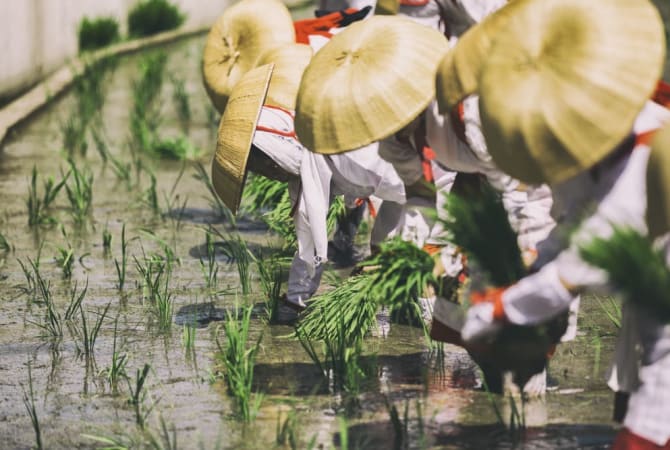
Travel Highlights
Popular places.
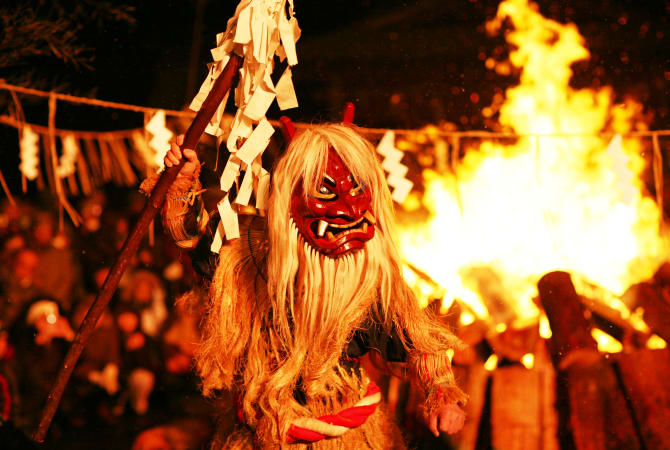
Explore by Interest
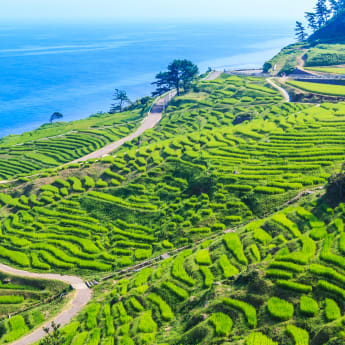
Important Notice

News from JNTO & Our Partners
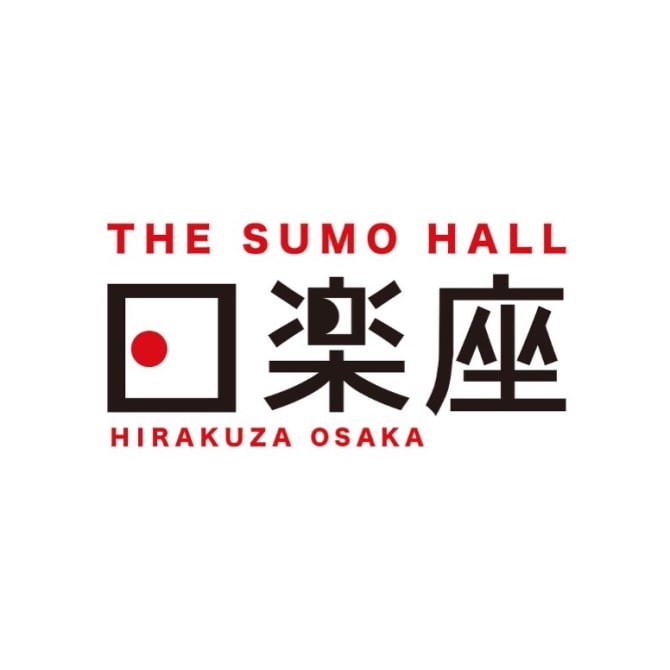
Inspiring Articles
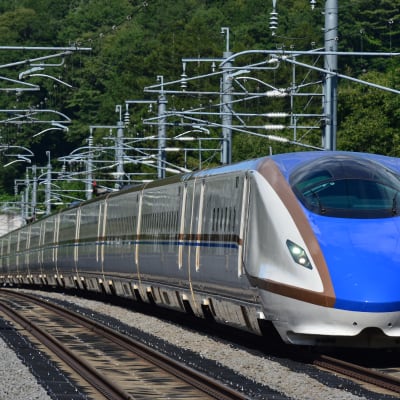
Food features
For First-Time Visitors
- Wi-Fi & Connectivity
- Weather & Geography
- IC Travel Cards
Where to Stay
- Luxury Stay
- Haneda Airport
- Narita Airport
- Osaka (KIX)
- Fukuoka Airport
Getting Around
- Shinkansen (Bullet Train)
- Luggage & Storage
Suggested Walks & Tours
- Tokyo 48 Hours
- Golden Route
- 2 Weeks in Japan
- Tour & Activities
Brochure Download
- Tours and Activities

Japanese Government Information
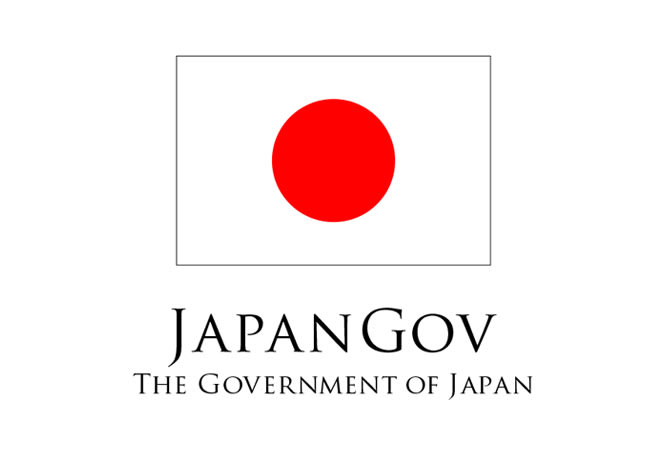
Please Choose Your Language
Browse the JNTO site in one of multiple languages

Search form
You are here, chinese tourists and japan.

Chinese tourists take pictures of cherry blossoms in Japan / Toshihiro Gamo
Subscribe to our weekly newsletter to get it delivered straight to your inbox!
Because vaccines won't have sufficiently reduced covid-19's threat, Japan won't permit spectators from abroad to attend the Tokyo Olympics and Paralympics in July and August. The International Olympic Committee has pledged to vaccinate all of the competing athletes. Ticket sales help offset the cost of hosting the games and athletes will miss the fans. Beyond ticket sales (US$527 million in 2013-2016), international visitors give many businesses a boost. Apart from the USC athletes who compete (44 in Brazil in 2016, the most of any university), most of us will have to just watch on television, something the pandemic has made quite familiar.
Among the visitors not able to join the Olympics in Tokyo are many Chinese. In recent years, visitors from China to Japan made up 30% of total international arrivals. Almost 10 million Chinese visited in 2019, five times the number of Americans who went to Japan. Because of their numbers, they contributed the most to the Japanese economy, though visitors from Australia and some other countries spent more per visitor. According to Ctrip, the Chinese online travel giant, the top activities for Chinese visitors (apart from shopping) are enjoying cherry blossoms in spring and maples in fall as well as visiting hot springs, trying out kimonos, and culinary tours. 54% of visitors are in their 20s or 30s. Osaka and Tokyo are the top destinations, but Okinawa, Sapporo and Nagoya are also popular. Starting in 2019, Japan made getting visas easier for younger people.
Relations between China and Japan are far from warm, but Chinese clearly love to visit and to shop in Japan. Such visitors and exports to China (China is Japan's largest export market) have greatly boosted Japan's economy. The place of visiting Chinese in the Japanese tourism sector is illustrated in the charts below.
Click to expand

Featured Articles

Happy Year of The Dragon! 祝您龙年快乐!
Happy Lunar New Year from the USC US-China Institute!

Passings, 2023
We note the passing of many prominent individuals who played some role in U.S.-China affairs, whether in politics, economics or in helping people in one place understand the other.

From Netflix to iQiyi: As the World Turns, Serial Dramas in Virtual Circulation
Ying Zhu looks at new developments for Chinese and global streaming services.

The War for Chinese Talent in the United States
David Zweig examines China's talent recruitment efforts, particularly towards those scientists and engineers who left China for further study. U.S. universities, labs and companies have long brought in talent from China. Are such people still welcome?
Outlook for China tourism 2023: Light at the end of the tunnel
China is now removing travel restrictions rapidly, both domestically and internationally. While the sudden opening may lead to uncertainty and hesitancy to travel in the short term, Chinese tourists still express a strong desire to travel. And the recent removal of quarantine requirements in January 2023 could usher in a renewed demand for trips abroad.
Domestically, there are already signs of strong travel recovery. The recent Chinese New Year holidays saw 308 million domestic trips, generating almost RMB 376 billion in tourism revenue. 1 China’s Ministry of Culture and Tourism. This upswing indicates that domestic travel volume has recovered to 90 percent of 2019 figures, and spending has bounced back to around 70 percent of pre-pandemic levels. 2 McKinsey analysis based on China’s Ministry of Culture and Tourism data.
This article paints a picture of Chinese travelers and their evolving spending behaviors and preferences—and suggests measures that tourism service providers and destinations could take to prepare for their imminent return. The analyses draw on the findings of McKinsey’s latest Survey of Chinese Tourist Attitudes, and compare the results across six waves of surveys conducted between April 2020 and November 2022, along with consumer sentiment research and recent travel data.
From pandemic to endemic
By January 8, 2023, cross-city travel restrictions, border closures, and quarantine requirements on international arrivals to China had been lifted. 3 “Graphics: China’s 20 new measures for optimizing COVID-19 response,” CGTN, November 15, 2022; “COVID-19 response further optimized with 10 new measures,” China Services Info, December 8, 2022; “China reopens borders in final farewell to zero-COVID,” Reuters, January 8, 2023. This rapid removal of domestic travel restrictions, and an increase in COVID-19 infection rates, likely knocked travel confidence for cross-city and within-city trips. Right after the first easing of measures, in-city transport saw a marked drop as people stayed home—either because they were ill, or to avoid exposure. Subway traffic in ten major cities in mainland China fell and then spiked during Chinese New Year in February. Hotel room bookings also peaked at this time.
Domestic airline seat capacity experienced a minor rebound as each set of restrictions was lifted—suggesting a rise in demand as airlines scheduled more flights. Domestic capacity fluctuated, possibly due to the accelerated COVID-19 infection rate and a temporary labor shortage. International seat capacity, however, continued to climb (Exhibit 1).
By Chinese new year, China was past its infection peak—and domestic tourism recovered strongly. For instance, Hainan drew 6.4 million visitors over Chinese New Year (up from 5.8 million in 2019) and visits to Shanghai reached 10 million (roughly double 2019 holiday figures). 4 China’s Ministry of Culture and Tourism. Overall, revenue per available room (RevPAR) during this period recovered and surpassed pre-pandemic levels, at 120 percent of 2019 figures. 5 STR data. Outbound trips are still limited, but given the pent-up demand for international travel (and the upswing in domestic tourism) the tourism industry may need to prepare to welcome back Chinese tourists.
Tourism players should be ready for this; the time to act is now.
A demand boom is around the corner—Chinese tourists are returning soon
Before the pandemic, Chinese tourists were eager travelers. Mainland China had the largest outbound travel market in the world, both in number of trips and total spend. 6 World Tourism Organization (UNWTO) Tourism dashboard, Outbound tourism ranking. In 2019, Mainland Chinese tourists took 155 million outbound trips, totaling $255 billion in travel spending. 7 China’s Ministry of Culture and Tourism. These figures indicate total outbound trips, including to Hong Kong and Macau. China is also an important source market for some major destinations. For instance, Chinese travelers made up 28 percent of inbound tourism in Thailand, 30 percent in Japan, and 16 percent of non-EU visitors to Germany. 8 United Nations World Tourism Organization (UNWTO) database.
Leisure travel was the biggest driver of China’s outbound travel, representing 65 percent of travelers in 2019. In the same year, 29 percent of travelers ventured out for business, and 6 percent journeyed to visit friends and relatives. 9 Euromonitor International database.
Our most recent Survey of Chinese Tourist Attitudes, conducted in November 2022, shows that Chinese tourists have retained their keen desire to explore international destinations. About 40 percent of respondents reported that they expect to undertake outbound travel for their next leisure trip.
Where do these travelers want to go?
The results also indicate that the top three overseas travel destinations (beyond Hong Kong and Macau) are Australia/New Zealand, Southeast Asia, and Japan. Overall, respondents show less interest in travel to Europe than in previous years, down from 7 percent to 4 percent compared to wave 5 respondents. Desire to embark on long-haul international trips to Australia/New Zealand increased from 5 percent to 7 percent, and North American trips from 3 percent to 4 percent since the last survey. The wealthier segment (monthly household income over RMB 38,000) still shows a high interest in EU destinations (13 percent).
There are stumbling blocks on the road to recovery
While travel sentiment is strong, other factors may deter travelers from taking to the skies: fear of COVID-19; the need for COVID-19 testing which can be expensive; ticket prices; risk appetite of destination countries; and getting a passport or visa.
Chinese travelers may favor domestic trips, even if all outbound travel restrictions are removed, until they feel it is safe to travel internationally. A COVID-19-safe environment in destination countries will likely boost travelers’ confidence and encourage them to book trips again. 10 “Long-haul travel barometer,” European Travel Commission, February 1, 2023.
Travel recovery is also dependent on airline capacity. Some international airlines might be slow to restore capacity as fleets were retired during COVID-19 and airlines face a shortage of crew, particularly pilots. Considering that at the time of writing, in April 2023, international airline seat capacity has only recovered to around 37 percent of pre-pandemic levels, travelers are likely to face elevated ticket prices in the coming months. For instance, ticket prices for travel in the upcoming holidays to popular overseas destinations such as Japan and Thailand are double what they were in 2019. 11 Based on Ctrip prices. Price-sensitive travelers might wait for ticket prices to level out before booking their overseas trips.
Chinese airlines, however, appear more ready to resume full service than their international counterparts —fewer pilots left the industry and aircraft are available. Chinese carriers’ widebody fleets are mostly in service or ready to be redeployed (Exhibit 2).
Moving forward, safety measures in destination countries will affect travel recovery. Most countries have dropped testing requirements on arrivals from mainland China, and Chinese outbound group travel has resumed but is still limited to selected countries.
Many Chinese travelers—maybe 20 percent—have had passports expire during the COVID-19 period, and China has not been renewing these passports. Renewals are now possible, but the backlog will slow travel’s rebound by a few months. 12 Steve Saxon, “ What to expect from China’s travel rebound ,” McKinsey, January 25, 2023. Furthermore, travel visas for destination countries can take some time to be processed and issued.
Taken together, these factors suggest that the returning wave of Chinese travelers may only gather momentum by the Summer of 2023 and that China’s travel recovery will likely lag Hong Kong’s by a few months.
Overall, China is opening up to travel, both inbound and outbound—all types of visas are being issued to foreign visitors, and locals are getting ready to travel abroad. 13 “China to resume issuing all types of visas for foreigners,” China Briefing, March 14, 2023.
Would you like to learn more about our Travel, Logistics & Infrastructure Practice ?
The returning chinese traveler is evolving.
Although Chinese travelers did not have opportunities to travel internationally over the past three years, they continued to travel domestically and explore new offerings. Annual domestic trips remained at around 50 percent of pre-pandemic levels, amounting to 8.7 billion domestic trips over the past three years. 14 China’s Ministry of Culture and Tourism. During this time, the domestic market matured, and travelers became more sophisticated as they tried new leisure experiences such as beach resorts, skiing trips, and “staycations” in home cities. Chinese travelers became more experienced as thanks to periods of low COVID-19 infection rates domestically they explored China’s vast geography and diverse experiences on offer.
Consequently, the post-COVID-19 Chinese traveler is even more digitally savvy, has high expectations, and seeks novel experiences. These are some of the characteristics of a typical traveler:
- Experience-oriented: Wave 6 of the survey shows that the rebound tourist is planning their trip around experiences. Outdoor and scenic trips remain the most popular travel theme. In survey waves 1 to 3, sightseeing and “foodie” experiences were high on the list of preferences while traveling. From waves 4 to 6, culture and history, beaches and resorts, and health and wellness gained more attention—solidifying the trend for experience-driven travel. Additionally, possibly due to the hype of the Winter Olympics, skiing and snowboarding have become popular activities.
- Hyper-digitized: While digitization is a global trend, Chinese consumers are some of the most digitally savvy in the world; mobile technologies and social media are at the core of daily life. COVID-19 drove people to spend more time online—now short-form videos and livestreaming have become the top online entertainment options in China. In the first half of 2022, Chinese consumers spent 30 percent of their mobile internet time engaging with short videos. 15 “In the first half of the year, the number of mobile netizens increased, and short videos accounted for nearly 30% of the total time spent online,” Chinadaily.com, 27 July 2022.
- Exploration enthusiasts: Chinese travelers are also keen to explore the world and embark on novel experiences in unfamiliar destinations. Survey respondents were looking forward to visiting new attractions, even when travel policies limited their travel radius. Instead of revisiting destinations, 45 percent of respondents picked short trips to new sites as their number one choice, followed by long trips to new sites as their second choice.
Consumers are optimistic, and travel spending remains resilient
McKinsey’s 2022 research on Chinese consumer sentiment shows that although economic optimism is seeing a global decline, 49 percent of Chinese respondents reported that they are optimistic about their country’s economic recovery. Optimism had dropped by 6 percentage points since an earlier iteration of the survey, but Chinese consumers continue to be more optimistic than other surveyed countries, apart from India (80 percent optimistic) and Indonesia (73 percent optimistic) (Exhibit 3). 16 “ Survey: Chinese consumer sentiment during the coronavirus crisis ,” McKinsey, October 13, 2022.
Chinese consumers are still keen to spend on travel, and travel spending is expected to be resilient. Wave 6 of the tourist attitude survey saw 87 percent of respondents claiming that they will spend more or maintain their level of travel spending. Moreover, when consumers were asked “which categories do you intend to splurge/treat yourself to,” travel ranked second, with 29 percent of respondents preferring travel over other categories. 17 “ Survey: Chinese consumer sentiment during the coronavirus crisis ,” McKinsey, October 13, 2022.
Against this context of consumer optimism, the wave 6 tourist attitude survey results shed light on how travelers plan to spend, and which segments are likely to spend more than others:
- The wealthier segment and older age groups (age 45-65) show the most resilience in terms of travel spend. Around 45 to 50 percent of travelers in these two groups will spend more on their next leisure trip.
- The wealthier segment has shown the most interest in beach and resort trips (48 percent). Instead of celebrating Chinese New Year at home with family, 30 percent of Chinese travelers in the senior age group (age 55-65) expect to take their next leisure trip during this holiday—10 percent more than the total average. And the top three trip preferences for senior travelers are culture, sightseeing, and health-themed trips.
- When it comes to where travelers plan to spend their money on their next trip, entertainment activities, food, and shopping are the most popular categories. These are also the most flexible and variable spending categories, and there are opportunities to up-sell—attractions, food and beverage, and retail players are well positioned to create unique and unexpected offerings to stimulate spending in this area (Exhibit 4).
Independent accommodation is gaining popularity
Overall, Chinese consumers have high expectations for products and services. McKinsey’s 2023 consumer report found that local brands are on the rise and consumers are choosing local products for their quality, not just for their cheaper prices. Chinese consumers are becoming savvier, and tap into online resources and social media to educate themselves about the specific details and features of product offerings. 18 Daniel Zipser, Daniel Hui, Jia Zhou, and Cherie Zhang, 2023 McKinsey China Consumer Report , McKinsey, December 2022.
Furthermore, 49 percent of Chinese consumers believe that domestic brands are of “better quality” than foreign brands—only 23 percent believe the converse is true. Functionality extended its lead as the most important criterion influencing Chinese consumers, indicating that consumers are focusing more on the functional aspects of products, and less on emotional factors. Branding thus has less influence on purchasing decisions. 19 Daniel Zipser, Daniel Hui, Jia Zhou, and Cherie Zhang, 2023 McKinsey China Consumer Report , McKinsey, December 2022.
These broader consumer sentiments are echoed in the travel sector. Chinese travelers pay attention to cost, but do not simply seek out the lowest prices. While 17 percent of wave 6 respondents are concerned about low prices, 33 percent are on the hunt for value-for-money offerings, and 30 percent prefer good discounts and worthwhile deals.
And consumer sentiment regarding local brands holds true for travel preferences. Independent travel accommodation continues to be the preferred choice for most respondents, increasing in share against international chain brand hotels (Exhibit 5). Almost 60 percent of respondents prefer independent accommodation such as boutique hotels, B&Bs, and Airbnb—an 8 percentage-point increase since 2020.
Local chain brand hotels remain stable, the favored accommodation for 20 percent of respondents. These hotels are seen as a more standardized option, and as most are located in urban areas, they target the budget traveler segment.
Opting for independent accommodation is not considered a trade down; Chinese travelers expect a high level of service. In particular, respondents in the wealthier segment picked independent options (57 percent) over international premium brands (27 percent).
Premium independent options for the wealthier segment are abundant, specifically in leisure travel. Setting up a premium brand hotel requires long-term construction periods and heavy capital investment. Small-scale boutique hotels or B&Bs, on the other hand, are more agile solutions that can ramp up in the short term. This may explain the abundance of premium independent offerings. For instance, in destinations such as Lijiang and Yangshuo, between seven and nine of the top-ten premium hotels listed on Ctrip are independent boutique hotels.
Premium independent accommodation’s strength lies in quality guest experience with a genuine human touch. The service level at premium independent establishments can even surpass that of chain brand accommodation thanks to the high staff-to-room ratio, which easily reaches 3:1 or even 5:1. 20 “Strategic marketing analysis of boutique hotels,” Travel Daily , June 3, 2015. For hotels in Xiamen, Lijiang, and Yangshou, Ctrip service ratings of premium independent hotels are all above 4.7, outperforming international chain brand hotels.
Travelers are becoming smarter and more realistic during hotel selection, focusing on fundamental offerings such as local features and value for money. Across all types of hotels, local features are one of the most important factors influencing hotel selection—even for chain brand hotels which have a reputation for mastering the standardized offering. On average, 34 percent of respondents report that local features and cultural elements are the key considerations affecting their choice of hotel.
Outbound Chinese tourists are evolving rapidly, becoming increasingly diverse in their travel preferences, behaviors, and spending patterns. Chinese travelers are not homogeneous, and their needs and preferences continue to evolve. Therefore, serving each group of tourists may require different product offerings, sales channels, or marketing techniques.

The path toward eco-friendly travel in China
How international travel and tourism can attract outbound chinese travelers.
China’s lifting of travel restrictions may cause some uncertainty in the short term, but a promising recovery lies ahead. Chinese tourists have maintained a strong desire to travel internationally and are willing to pay for this experience. They are also discerning and looking for high-quality accommodation, offerings, and service. As boutique hotels are becoming more popular, international hotel brands hotels could, for example, aim to stand out by leveraging their experience in service excellence.
With renewed travel demand, now may be the time for international travel and tourism businesses to invest in polishing product offerings—on an infrastructural and service level. Tourism, food and beverage, retail, and entertainment providers can start preparing for the rebound by providing unique and innovative experiences that entice the adventurous Chinese traveler.
Craft an authentically local offering that appeals to experience-driven Chinese travelers
Chinese travelers have suspended overseas trips for three years, and are now looking to enjoy high-quality experiences in destinations they have been to before. They also want to do more than shopping and sightseeing, and have expressed willingness to spend on offerings geared towards entertainment and experience. This includes activities like theme parks, snow sports, water sports, shows, and cultural activities. Authentic experiences can satisfy their desire for an immersive foreign experience, but they often want the experience to be familiar and accessible.
Designing the right product means tapping into deep customer insights to craft offerings that are accessible for Chinese travelers, within a comfortable and familiar setting, yet are still authentic and exciting.
Travel and tourism providers may also have opportunities to up-sell or cross-sell experiences and entertainment offerings.

Social media is essential
Social media is emerging as one of the most important sources of inspiration for travel. Short video now is a major influence channel across all age groups and types of consumers.
Tourist destinations have begun to leverage social media, and short video campaigns, to maximize exposure. For example, Tourism Australia recently launched a video campaign with a kangaroo character on TikTok, and overall views soon reached around 1.67 billion.
The story of Ding Zhen, a young herder from a village in Sichuan province, illustrates the power of online video in China. In 2020, a seven-second video of Ding Zhen turned him into an overnight media sensation. Soon after, he was approached to become a tourism ambassador for Litang county in Sichuan—and local tourism flourished. 21 “Tibetan herder goes viral, draws attention to his hometown in SW China,” Xinhuanet, December 11, 2020. Another Sichuan local, the director of the Culture and Tourism Bureau in Ganzi, has drawn visitors to the region through his popular cosplay videos that generated 7 million reviews. Building on the strength of these influential celebrities, visitor numbers to the region were said to reach 35 million, more than two-and-a-half times 2016 volumes. 22 “Local official promoting Sichuan tourism goes viral on internet,” China Daily, June 17, 2022; “The Director of Culture and Tourism disguises himself as a “Swordsman” knight to promote Ganzi tourism,” Travel Daily , June 17, 2022.
Online travel companies are also using social media to reach consumers. Early in the pandemic, Trip.com took advantage of the upward trend in livestreaming. The company’s co-founder and chairman of the board, James Liang, hosted weekly livestreams where he dressed up in costume or chatted to guests at various destinations. Between March and October 2020, Liang’s livestreams sold around $294 million’s worth of travel packages and hotel room reservations. 23 “Travel companies adapt to a livestreaming trend that may outlast the pandemic,” Skift, October 26, 2020.
Livestreaming is being used by tourism boards, too. For instance, the Tourism Authority of Thailand (TAT) collaborated with Trip.com to launch a new campaign to attract Chinese tourists to Thailand as cross-border travel resumed. The broadcast, joined by TAT Governor Mr Yuthasak Supasorn, recorded sales of more than 20,000 room nights amounting to a gross merchandise value of over RMB 40 million. 24 “Trip.com Group sees border reopening surge in travel bookings boosted by Lunar New Year demand,” Trip.com, January 13, 2023.
International tourism providers looking to engage Chinese travelers should keep an eye on social media channels and fully leverage key opinion leaders.
Scale with the right channel partners
Travel distribution in China has evolved into a complex, fragmented, and Chinese-dominated ecosystem, making scaling an increasingly difficult task. Travel companies need to understand the key characteristics of each channel type, including online travel agencies (OTAs), online travel portals (OTPs), and traditional travel agencies as each target different customer segments, and offer different levels of control to brands. It also takes different sets of capabilities to manage each type of distribution channel.
Travel companies can prioritize the channels they wish to use and set clear roles for each. One challenge when choosing the right channel partner is to avoid ultra-low prices that may encourage volume, but could ultimately damage a brand.
Meanwhile, given the evolution of the postCOVID-19 industry landscape and rapid shifts in consumer demand, travel companies should consider direct-to-consumer (D2C) channels. The first step would be selecting the appropriate D2C positioning and strategy, according to the company’s needs. In China, D2C is a complicated market involving both public domains (such as social media and OTA platforms) and private domains (such as official brand platforms). To make the most of D2C, travel companies need a clear value proposition for their D2C strategy, whether it be focused on branding or on commercial/sales.
Create a seamless travel experience for the digitally savvy Chinese tourist
China has one of the most digitally advanced lifestyles on the planet. Chinese travelers are mobile-driven, wallet-less, and impatient—and frequently feel “digitally homesick” while abroad. Overseas destinations and tourism service providers could “spoil” tech-savvy Chinese travelers with digitally enhanced service.
China’s internet giants can provide a shortcut to getting digital services off the ground. Rather than building digital capabilities from scratch, foreign tourism providers could engage Chinese travelers through a platform that is already being used daily. For example, Amsterdam’s Schiphol Airport provides a WeChat Mini Program with four modules: duty-free shopping, flight inquiry, information transfer, and travel planning. This contains information about all aspects of the airport, including ground transportation and tax refund procedures.
Alibaba’s Alipay, a third-party mobile and online payment platform, is also innovating in this space. The service provider has cooperated with various tax refund agencies, such as Global Blue, to enable a seamless digitized tax refund experience. Travelers scan completed tax refund forms at automated kiosks in the airport, and within a few hours, the refunded amount is transferred directly to their Alipay accounts. 25 “Alipay and Global Blue to make tax refunds easy for Chinese tourists,” Alizila, June 23, 2014.
Such digital applications are likely to be the norm going forward, not a differentiator, so travel companies that do not invest in this area may be left behind.
Chinese travelers are on the cusp of returning in full force, and tourism providers can start preparing now
With China’s quarantine requirements falling away at the start of 2023, travelers are planning trips, renewing passports and visas, and readying themselves for a comeback. Chinese tourists have not lost their appetite for travel, and a boom in travel demand can be expected soon. Though airlines are slow to restore capacity, and some destination countries are more risk averse when welcoming Chinese travelers, there are still options for Chinese tourists to explore destinations abroad.
Tourism providers can expect to welcome travelers with diverse interests who are willing to spend money on travel, who are seeking out exciting experiences, and who are choosing high-quality products and services. The returning Chinese traveler is digitally savvy and favors functionality over branding—trends suggest that providers who can craft authentic, seamless, and unique offerings could be well positioned to capture this market.
Guang Chen and Jackey Yu are partners in McKinsey’s Hong Kong office, Zi Chen is a capabilities and insights specialist in the Shanghai office, and Steve Saxon is a partner in the Shenzhen office.
The authors wish to thank Cherie Zhang, Glenn Leibowitz, Na Lei, and Monique Wu for their contributions to this article.
Explore a career with us
Related articles.
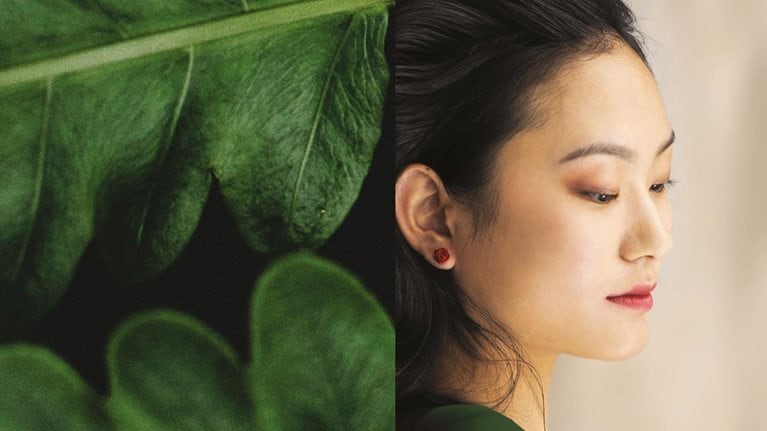
- Philippines
- New Zealand
- Netherlands
- United Kingdom

Asia has long been regarded by travelers from all over the world as one THE best continents to visit. Southeast Asia in particular is an incredibly popular region, but we think the somewhat overlooked (and magical countries) of East Asia deserve to be on your bucket list too! China and Japan are two of the most well-known countries in the area and while they are relatively close to each other, each has its own individual charm.
We totally get that not everyone has the time or budget to go galavanting around the globe, so every once in a while, you may find yourself torn between two awesome destinations. In this case, China or Japan? We’re going to be straight with you, it is not an easy choice! Both countries have delicious food, breathtaking landscapes, and are a LOT of fun… all the hallmarks of a great vacation (how will we ever choose???).
If you’re pulling your hair out because you simply can’t decide, worry not, because we’ve got you covered! Keep reading as we compare attractions, accommodation, food, nightlife, and more, to see which country comes out on top as our overall winner!
Table of Contents
China vs Japan: Accommodation
You will find some seriously great places to stay in both China AND Japan. However, Japan overall has more choice. There are roughly 26,000 properties listed on Booking.com for Japan, whereas in China, there are only around 12,250 properties. Both countries have one to five-star hotels available, but China has a lower proportion of one-star hotels and a much higher proportion of five-star hotels.
Find A Travel Buddy!
There is a range of property types in both countries. You’ll find beach resorts by the ocean, high-rise hotels in big cities, and guest houses in smaller towns. Overall, the selection is great in both places. Japan is famous for its uber-cool and futuristic capsule hotels. They contain pods that act as self-contained hotel rooms, with a bed, lights, and maybe even a TV if you’re lucky. This one in Tokyo is giving us some serious sci-fi vibes and is worth checking out!
China has its fair share of unique properties too. This property in Hunan Province has an incredible clear dome for rent which sits on a private platform in the forest canopy (#goals). If that wasn’t baller enough, it is right on the doorstep of Zhangjiajie National Forest Park, the location that inspired the movie Avatar’s “Hallelujah Mountains” *jaw drops*
Winner: Draw – It’s a tie! Even though China has fewer choices, both countries have a wide range of properties to choose from, as well as some unique ones to make your getaway extra memorable.
China vs Japan: Food
Food, food, glorious good. It’s safe to say that you will NOT go hungry in either China OR Japan, and nor will you be disappointed by the local cuisine. Both Chinese and Japanese food are famous worldwide for being mouth-wateringly delicious, so, you can’t really go wrong with trying some authentic dishes, can you? Different regions in Japan and China are famous for different dishes. For the best Peking duck, head to Beijing and more specifically Beijing Da Dong. Tokyo is the most famous place in Japan for what’s considered the “original” style of ramen, but if you love miso-broth ramen as much as we do, then you should head to Sapporo.
In China, you will be able to find vegetarian and vegan-friendly food. A proportion of the population is Buddhist and many practice vegetarianism or veganism. However, you will still have to look a little harder than in Western countries. Be prepared to eat a LOT of tofu, since they don’t have the vast number of meat-free alternatives we are used to in the West. Japanese diets are heavily centered around seafood, so while you can easily avoid meat and dairy, finding vegetarian or vegan dishes will be more difficult. Even meals that seem free of meat and other animal products, can have non-vegetarian/vegan-friendly stocks and sauces, so be wary.
Winner: Draw – What can we say, it’s another draw folks. Both countries have ridiculously awesome food, BUT, if you’re a vegetarian or vegan, China may just sneak ahead to take first prize!
China vs Japan: Price
Sadly, for most of us, price plays a huge role in where we decide to go on vacation. Of course, if you’re a massive shopaholic and love eating out at fancy restaurants, your holiday will definitely cost more. But what about those on a budget? Which is cheaper, China or Japan? Japan already has a bit of a reputation for being pricey, especially in Tokyo, so it may not be the ideal place to go if your purse strings are tight.
According to budgetyourtrip.com, the average tourist spends 130 USD a day in Japan, compared to 72 USD a day in China! That means a one-week vacation in Japan will set you back over 900 USD, whereas a similar trip in China will cost just over half of that at around 500 USD.
One of the main reasons why Japan is so expensive compared to China is its location. Japan is a group of islands so many of its everyday goods are imported, raising the prices. Furthermore, the Tokyo Metropolitan Area is also one of the most densely populated metropolitan areas in the world! So, this explains the steep rental prices and maybe the popularity of capsule hotels.
Winner: China – China is our hands-down winner when it comes to price, we love you Japan, but why do you have to be so hard on our wallets???
China vs Japan: Getting around
When it comes to getting around China and Japan, there are some similarities, but there are some differences too. China is a hell of a lot bigger than Japan. Simply put, it’s MASSIVE. Not so simply put, China covers an area of just under 9.6 million km². Japan on the other hand is just under 378 thousand km², although its various islands should be taken into consideration, as this makes getting around more complicated.
Due to its sheer size, the best and most convenient way to travel long distances in China is by airplane. But, if you’re on a budget or have a little more time, bullet trains are also a great way to travel between cities. In Japan, traveling by train is by far the most popular option. They also have bullet trains (or Shinkansen) linking major cities, but their other rail services are comfortable, clean, and can go through some very scenic routes *cue Studio Ghibli background music*.
For longer journeys, like Tokyo to Sapporo, they also have overnight sleeper trains! To reach farther-flung destinations or islands like Okinawa air travel is definitely the way to go, but booking in advance will save you a lot of money, so some degree of planning is required!
Winner: Japan – We just can’t get the image of a cute little train bumbling through the Japanese countryside out of our heads.
China vs Japan: Climate
China is HUGE (read: above), which means the country has a wide range of climates. There’s even a freaking desert in China, yep, a desert! Generally speaking though, winters in China are freezing in the north, and much more mild in the south. The entire country, except for mountain peaks and highlands, is hot over the summer and summer is by far the rainiest season! Japan follows a very similar pattern, in that wintertime is cold, snowy, and icy in the north, temperate in the center, and subtropical in the far south. The whole country is prone to the monsoon season which brings torrential rains in summer and fall.
Both countries have areas that experience snowfall in winter, and skiing is a popular past-time for locals and tourists, with numerous ski resorts available to choose from. China and Japan also have sub-tropical/tropical climates in the south, with some amazing beaches and coral reefs too!
Winner: Draw – It has got to be a draw. We’re talking about TWO countries where you can ski in the winter and snorkel in the summer. It doesn’t get much better than that…
China vs Japan: Top attractions
It’s time to talk TOP attractions, and if our decision wasn’t already hard enough… both China and Japan have some once-in-a-lifetime sights! These include historical and natural attractions, with a bonus furry, little (or should we say… giant ) friend! One of THE top things to see in Japan, and its most famous landmark is Mount Fuji. It is recognized worldwide and in summer, over one million people climb to its summit as a pilgrimage of sorts. To rival this, China’s most well-known landmark is the Great Wall of China. It hardly needs an introduction, but the wall spans over 6,000 kilometers with some parts dating as far back as the 7th century BC. Now that’s old.
However, without a doubt, one of our favorite must-sees in China is the giant pandas! The Sichuan Giant Panda Sanctuaries are home to over 30% of the world’s population and the Chengdu Giant Panda Breeding and Research Base is a top place to see these amazing creatures while supporting their conservation. Our “thing you cannot miss” in Japan, is the iconic sakura or cherry blossoms. In springtime parts of the country are transformed into a sea of pink as the cherry trees bloom. It’s a truly magical time, but prices can skyrocket so beware!
Winner: China – Boy it was tough, but the giant pandas definitely pushed China towards victory!
China vs Japan: Nightlife
Neither China or Japan is particularly well-known in Asia for their nightlife . However, just because the after-hours scene is a little different from what we’re used to, doesn’t mean it should be overlooked!
Drinking and eating are an important part of Japan’s nighttime culture, with many people heading to an izakaya, the country’s version of a British pub or Spanish tapas bar, after work. They tend to serve small, inexpensive dishes like edamame or grilled meat to be eaten alongside beer, sake, umeshu (plum wine), and shochu (a local spirit). For a more lively night out, you can head to a karaoke venue (karaoke was invented in Japan), or check out museums, aquariums, and theme parks, many of which stay open until 9 or 10pm!
In China, aside from a normal “night out”, you can also enjoy something a little different when it comes to evening entertainment. You could find yourself spending the evening at the colorful Chinese opera, watching an acrobatic performance, or like in Japan, singing your heart out at karaoke! Eating is also a big deal in Chinese nighttime culture, and there are plenty of fantastic night markets all over. The Donghuamen Night Market in Beijing is even considered one of the best night markets in the world!
Winner: Draw – They both sound hella fun tbh…
China vs Japan: Capital cities
Beijing or Tokyo… Now that is the question. Both of these cities have got to be amongst some of the liveliest in the world. They’re rich in history, culture, and house some of the country’s top attractions. Beijing is cheaper than Tokyo, with a meal at a mid-range restaurant for two costing on average 40 USD in Beijing versus 53 USD in Tokyo. However, if we remove price as a factor, both cities have a lot going for them and are equally matched.
Beijing houses the Forbidden City, the Summer Palace, and the Great Wall which is easily accessible from the city. It also has the biggest tea market in north China on Maliandao street. Over 900 vendors sell pretty much any type of tea imaginable, if you’re a tea-lover, it’s a MUST. Tokyo on the other hand not only has historical buildings like the imperial palace but has several famous districts known for their weird and wacky culture! Harajuku is a renowned fashion district and is an insight into Japanese pop culture, with kawaii fashion stores, manga shops, and cute cafes. Shibuya is one of the most well-known shopping areas and is home to the Shibuya Crossing which is famous worldwide.
Winner: Tokyo – it’s wacky, it’s wonderful, we love it.
China vs Japan: The final verdict
You’ve made it this far, and now for our final verdict… Drum roll pleaaaaase… It’s a draw ! Yes, that’s right, we simply cannot decide. Both countries are so full of life, culture, and not to mention have GREAT food. Whether you visit China or Japan, you’ll have a blast. Although, if Japan was a little cheaper, it may have just nabbed the top spot!
Destinations
- North America
- South America
- Group Tours
- Cookie Policy
- Privacy Policy
- Terms & Conditions
© 2022 Journeying The Globe. All Rights Reserved.
Got a Travel Question?
Ask questions, get inspired, and plan your next adventure with us! Join our free Facebook group for travelers and connect with a global network of passionate explorers.
JOIN FOR FREE
UN Tourism | Bringing the world closer
Share this content.
- Share this article on facebook
- Share this article on twitter
- Share this article on linkedin
China recovers its position as top spender in 2023 as Asia and the Pacific reopens to tourism
- All Regions
China has recovered its position as top spender on international tourism in 2023 as Asia and the Pacific consolidates its recovery from the impacts of the pandemic. In 2022, the list of top spenders was headed by the United States. France, Spain and USA took the top spots for most-visited destinations.
Top Tourism Spenders in 2023
Chinese expenditure on travel abroad reached USD 196.5 billion in 2023, ahead of the United States (USD 150 billion), Germany (USD 112 billion), the United Kingdom (USD 110 billion) and France (USD 49 billion). Making up the top ten spenders for 2023 are Canada, Italy, India, the Russian Federation and the Republic of Korea. India jumped to 8th place, from 14th in 2019, confirming the growing importance of the country as a source market, while Italy rose from 10th to 7th position.
Top in arrivals and receipts: France, Spain and USA consolidate their positions
France consolidated its position as the world’s most visited destination in 2023 with 100 million international tourist arrivals. Spain was second with 85 million, followed by the United States (66 million), Italy (57 million) and Türkiye, which closed the top five with 55 million international tourists.
Completing the top ten most visited destinations in 2023 are Mexico, the United Kingdom, Germany, Greece and Austria. Compared to before the pandemic, Italy, Türkiye, Mexico, Germany and Austria all rose one position, while the United Kingdom rose from 10th to 7th and Greece from 13th to 9th.
On the side on international tourism receipts, the ranking is led by the United States, earning USD 176 billion in 2023, followed by Spain (USD 92 billion), the United Kingdom (USD 74 billion), France (USD 69 billion) and Italy (USD 56 billion).
Following the above, destinations earning the most from international tourism in 2023 include the United Arab Emirates, Türkiye, Australia, Canada, Japan, Germany, Saudi Arabia, Macao (China), India and Mexico which complete the top 15 list of tourism earners.
Upward movements in the ranking among the top earners include the UK jumping to the 3rd position from 5th pre-pandemic, the United Arab Emirates from 13th to 6th, Türkiye from 12th to 7th, Canada from 15th to 9th, Saudi Arabia from 27th to 12th, and Mexico from 17th to 15th.
Croatia (from 32nd to 25th), Morocco (from 41st to 31st) and the Dominican Republic (43rd to 34th) also moved up in the Top 50 ranking by receipts in 2023, as did Qatar (from 51st to 37th) and Colombia (50th to 44th).
Looking ahead to a full recovery globally in 2024
As per the latest World Tourism Barometer , in 2023 international tourist arrivals recovered 89% of 2019 levels and 97% in Q1 2024. UN Tourism’s projection for 2024 points to a full recovery of international tourism with arrivals growing 2% above 2019 levels, backed by strong demand, enhanced air connectivity and the continued recovery of China and other major Asian markets.
Total export revenues from international tourism, including both receipts and passenger transport, reached an estimated USD 1.7 trillion in 2023, about 96% of pre-pandemic levels in real terms. Tourism direct GDP recovered pre-pandemic levels in 2023, reaching an estimated USD 3.3 trillion, equivalent to 3% of global GDP.
Related links:
- Download News Release on PDF
- Tourism Barometer Data
- World Tourism Barometer PPT
Related Content
Un tourism commits to the antigua and barbuda agenda fo..., un tourism launches the tourism investment guidelines f..., un tourism connects leaders for investment conference f..., middle east members prioritize innovation and investmen....

Japan or China: Where to travel next?
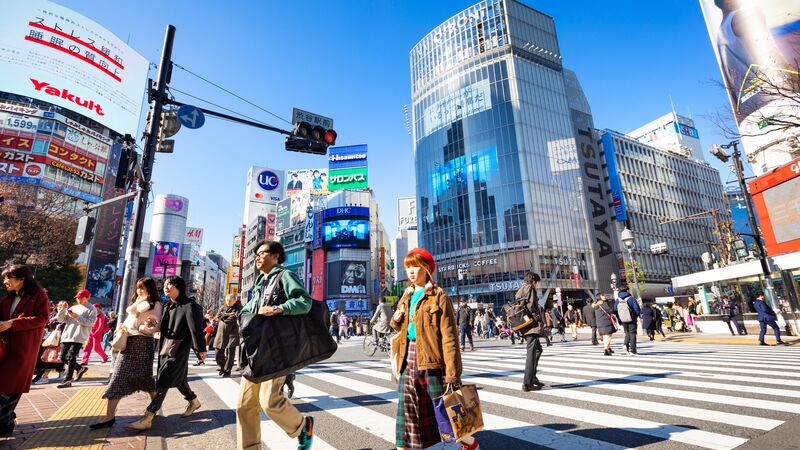
Because sometimes the hardest part of travelling is choosing where to go. ..
If you’re anything like me (and have an ever-growing bucket list), then it’s not easy choosing where to travel next. Especially when it’s between Japan and China. Both countries are steeped in history and boast incredible landscapes, world-class cuisines and more adventures than you can poke a chopstick at. Sigh .
If you’ve hit a brick wall, fear not. We’ve put together a handy guide comparing all the top considerations to help you out – we’re talking culture, food, cities, landscapes and weather. Failing this, you can always flip a coin.
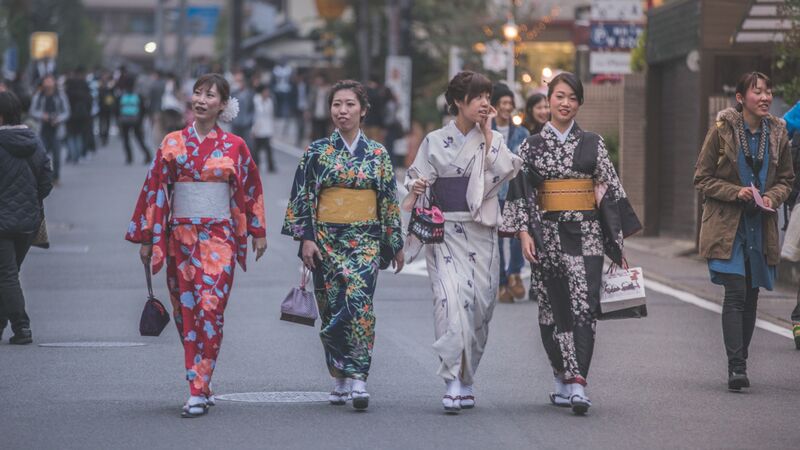
Japanese culture is a fascinating mix of old and new. On the one hand, there are thousands of years of traditions influenced by Shinto, Buddhism and Confucianism, but on the other is a trailblazing society setting trends in tech, fashion-forwardness and architecture. Sleek bullet trains whoosh past centuries-old temples and tea houses, and you might see geishas using state-of-the-art vending machines selling everything from lettuce to lobsters (only in Japan!).
Although the younger generations continue to push the cultural boundaries, social harmony is the pillar of Japanese society, and traditional values like saving face, humility and respecting your elders are just as important today. Ancient Japanese philosophies are also integrated into daily life, including ikigai (reason for being), omotenashi (providing impeccable hospitality without expecting anything in return) and kaizen (continuous improvement).
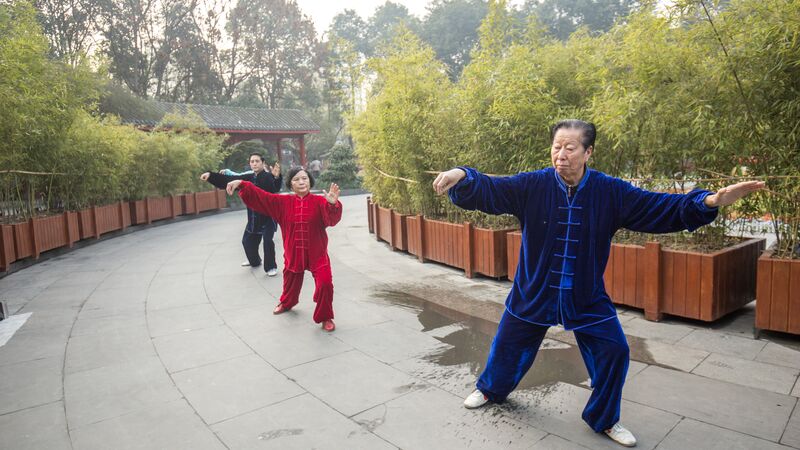
As one of the world’s oldest civilisations, China has an intriguing history of dynastic rule and ancient cultures influenced by Confucianism, Taoism and Buddhism. Relics of China’s dynastic past are littered throughout the country, including the iconic Great Wall and the Forbidden City. China has also gifted the world with many cultural riches including martial arts, Chinese medicine, kungfu, tai chi and Chinese calligraphy.
With 56 ethnic groups (the largest being the Han), modern Chinese culture is rich and complex. Though China continues to grow and change at a rapid pace thanks to a booming economy, centuries-old philosophies are interwoven in daily life – including the theories of the five elements and yin-yang – and traditional values such as family, social harmony and loyalty remain at the heart of society. This contrast between the ancient and the modern is particularly strong in cities like Shanghai where giant skyscrapers loom over traditional lilong houses.
SEE THE HIGHLIGHTS OF CHINA
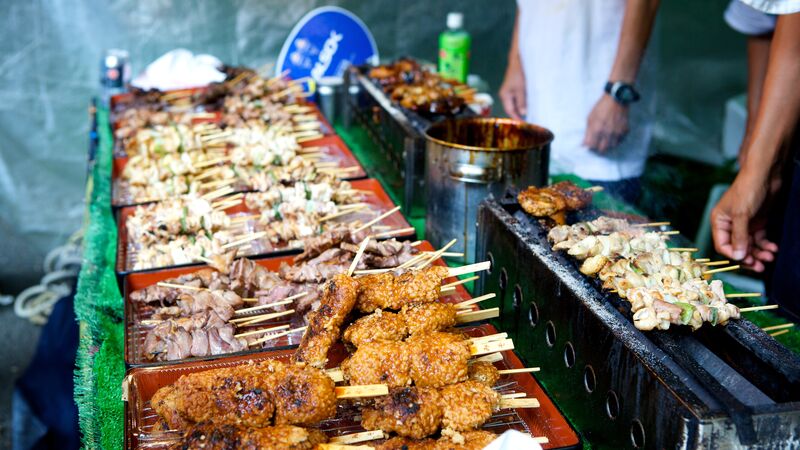
Japan brought sushi, ramen and tempura to the world (and for that, I’ll be eternally grateful), but there’s so much more on offer. Japanese cuisine is renowned for its fresh, seasonal produce and meticulous preparation. Most dishes comprise rice or noodles, a few side dishes and soup. Meat is a popular ingredient, though seafood is where Japan shines (hello, sashimi). Popular dishes include unagi (grilled eel), takoyaki (octopus dumplings), karaage (Japanese fried chicken), yakitori (meat skewers) and shabu-shabu (Japanese-style hot pot).
Feeling thirsty after all that soy sauce? Quench your thirst with a cold beer or glass of sake. Or swap your morning coffee for a matcha latte or antioxidant-packed green tea. Tea is a big deal in Japan, and if you attend a traditional Japanese tea ceremony you’ll never look at a cuppa in the same way again.
GO ON A REAL FOOD ADVENTURE IN JAPAN
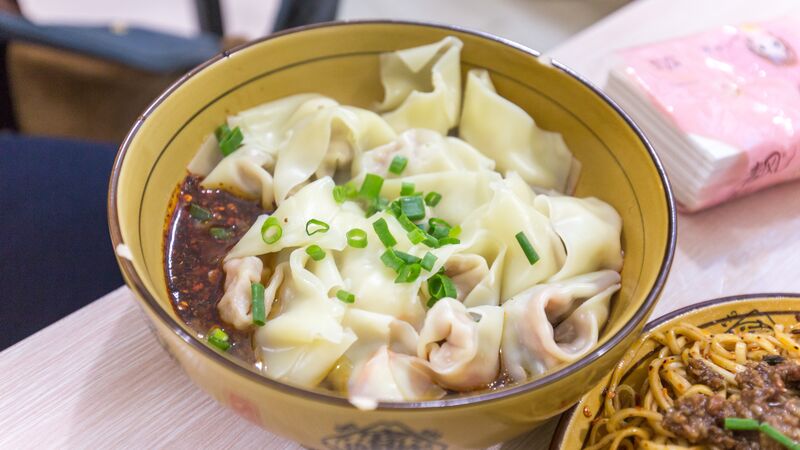
China is massive – and so nearly every region has its own cooking style. Generally, Chinese food tends to be heavier than Japanese with more spices, chilli and oil. It’s also meatier with lots of beef, pork and duck, though seafood and tofu are also popular. Famous dishes to try include kung pao chicken, Peking roast duck, Mapo tofu and char sui. A word of warning: it can be hard to find vegetarian and vegan food in China, but it can be done.
If you like it hot, then Sichuan is calling your name. This province is known for the fiery, sweat-inducing Sichuan pepper, which, according to ancient Chinese medicine, helps the body to expel dampness and prevent disease. You’ll definitely sweat after slurping on a Sichuan hot pot!
If you need to quench your thirst after all that pepper, try a refreshing beer (Snow and Tsingtao are two of the most popular brands), a baijiu cocktail or a glass of mijiu (a sweet, slightly bitter wine made from glutinous rice). Stay hydrated throughout the day with green, white or black tea – like Japan, tea is an integral part of Chinese culture.
GO ON A REAL FOOD ADVENTURE IN CHINA
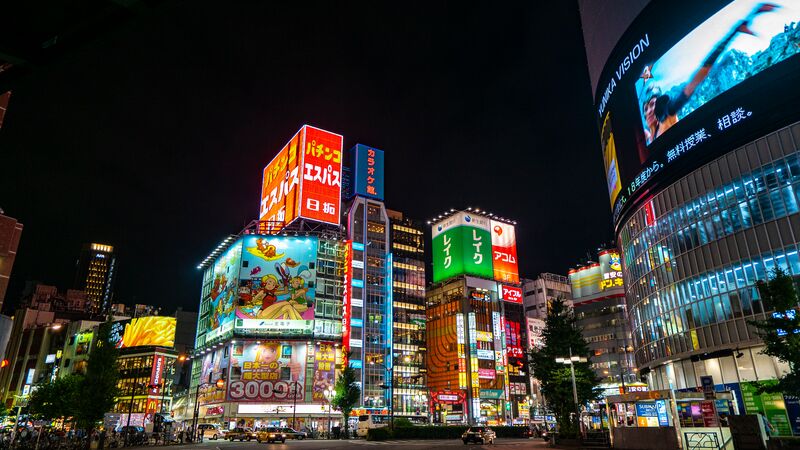
It’s impossible to deny the allure of Japan’s cities – even if you’re more of a nature lover than an urbanite. Tokyo is known as one of the coolest cities in the world with a fusion of futuristic technology and ancient landmarks. Get lost in the neon-lit streets, sip matcha in a quirky café in Harajuku or scramble your way through the famous Shibuya Crossing.
If you’re looking for culture, head to charming Kyoto to discover hundreds of colourful shrines and temples, relax in serene gardens and walk through Gion, Kyoto’s famous Geisha district. To get under the skin of Japan, head to Matsumoto to explore impressive castles, traditional storehouses and amazing soba noodles. History buffs should also go to historic Hiroshima to discover its shrines, peace parks and sizzling food scene.
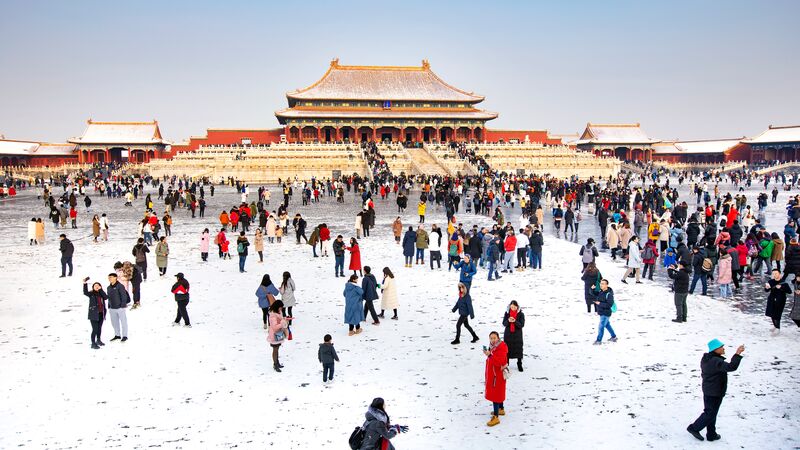
China has some of the oldest and biggest cities in the world. They might be crowded and chaotic, but they’re littered with landmarks that reveal China’s fascinating past. For culture, head to the sprawling capital of Beijing to visit seven UNESCO World Heritage sites, wind through a labyrinth of hidden hutongs, stroll along a section of the Great Wall and watch a dazzling Chinese opera show.
There’s also the frenetic Shanghai with its intriguing blend of cultures and architecture (think art deco buildings and lantern-lit canals hidden among towering skyscrapers). Enjoy the city’s eclectic food scene, see the Tudor mansions of the famous Huaihai Road or take a short train ride to Xitang – a charming water town that was once a hub for 19th-century trade.
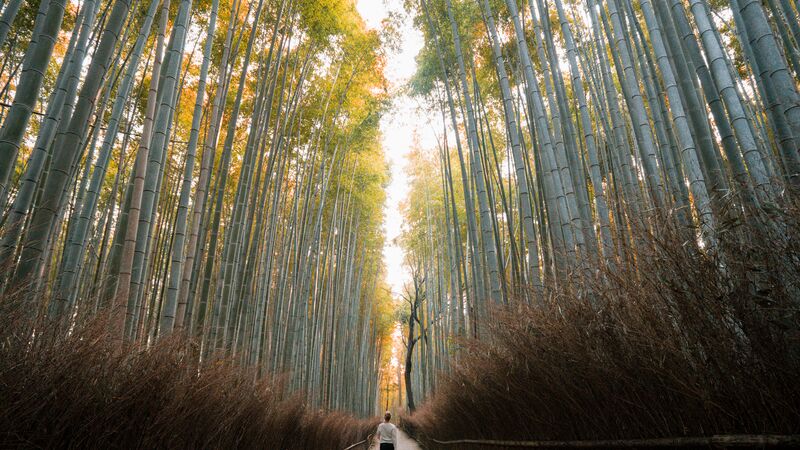
Japan has been blessed by Mother Nature in many ways with a diverse landscape of towering peaks, dense forests and pristine coastline. It’s also home to more than 100 volcanoes, including the majestic Mt. Fuji, due to its location on the Ring of Fire. Even in major cities like Tokyo and Osaka, you’re only ever a short train ride away from a beautiful nature escape.
If you like hiking, tackle one of the many trails of Mount Takao or head to Arashiyama Bamboo Grove in Kyoto to walk among towering bamboo. For water-based pursuits, cruise through the stunning Takachiho Gorge in Miyazaki or soak in Hokkaido’s mineral-rich onsens. It’s also worth visiting Miyajima Island off Hiroshima to meet some of its four-legged residents (spoiler alert: they’re deer).
HIKE, BIKE AND KAYAK THROUGH JAPAN
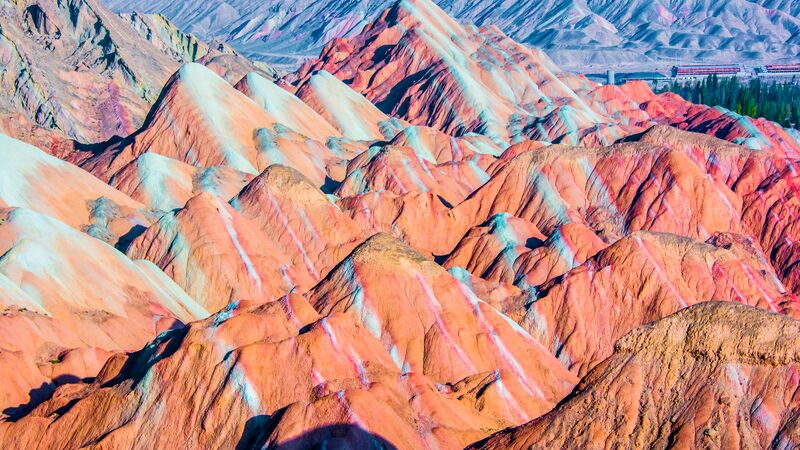
China is the third-largest country in the world and so the landscapes are incredibly diverse. In fact, China is a ‘megadiverse’ country with over 550 species of mammals, 1200 species of birds, 31,000 types of flora and 27,000 species of fungi. From beautiful wetlands to vast plateaus, and sweeping deserts to cascading rice terraces, there are breathtaking scenes to explore in every province.
Make your way to Guilin to admire karst hills from the picture-perfect Li River, witness the remarkable colours of the Rainbow Mountains in Zhangye Geopark, hike to the Golden Summit of Mount Emei to stand above the clouds or discover the floating peaks of Zhangjiajie (you might even recognise this scene from the iconic movie, Avatar ).
RELATED: 6 SURREAL LANDSCAPES TO EXPLORE IN CHINA
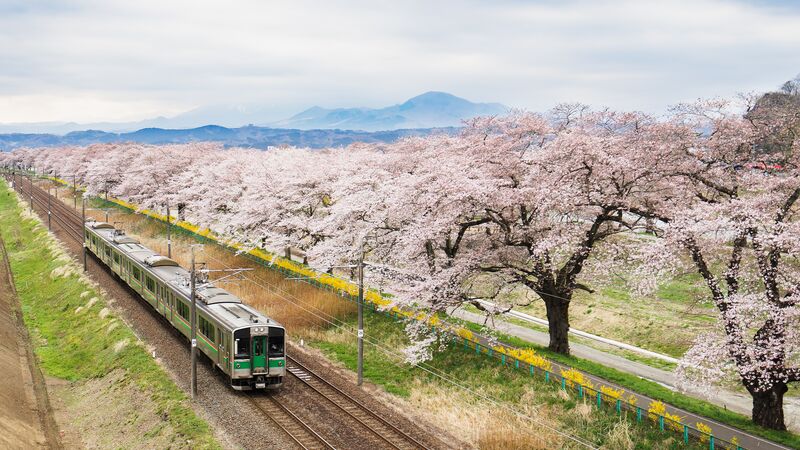
When it comes to weather, Japan has it all. Most regions sit in a temperate climate zone with four distinct seasons. There’s never a ‘bad’ time to travel to Japan, but spring (March to May) is one of the most popular seasons when the stunning cherry blossoms are in full bloom. There’s no sight quite like it!
September to November is also a fabulous time of year when the landscapes turn red, orange and gold with autumn foliage. Winter is mild in places like Osaka and Tokyo which get a light dusting of snow, while northern Japan gets dumped with powder – this means one thing: hit the slopes! Winter is the quietest time of year, but perfect if you want to explore the usually busy streets in solitude. Plus, a piping hot bowl of ramen hits differently when it’s cold outside.
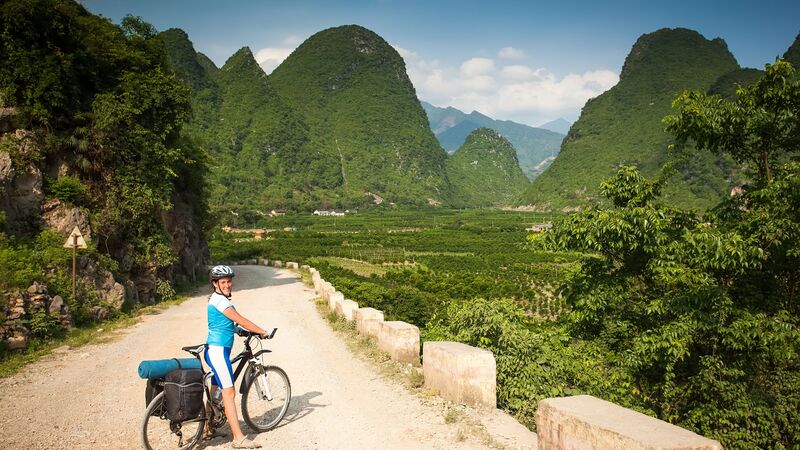
With so many climate zones, the weather varies a lot in China. Depending on when and where you visit, you might experience intense heat and humidity in summer and thick blankets of snow in winter. China’s northern regions have hot, dry summers, while destinations along the eastern coastlines and in the south are more humid. Snow is possible in winter in many regions, but especially in the northern reaches.
Hiking and outdoor activities are best in summer and autumn, though tourism usually peaks between June and August so bear this in mind if you want to dodge the crowds. Winter is the low season, but it’s a fantastic time for cultural festivals with the Harbin Ice and Snow Festival and Chinese New Year. For mild weather and smaller crowds, a shoulder month like October or May might suit.
RELATED: BEST TIME TO VISIT CHINA
The verdict
This one’s a solid draw. Both destinations promise to deliver with delicious food, culture, history and breathtaking landscapes. Japan is smaller than China and so it might be easier to cover more ground and experience more culture in a shorter space of time, but you’re bound to have an unforgettable adventure no matter which country you choose.
Feeling inspired? Check out Intrepid’s small group tours in China and Japan .
Feeling inspired?
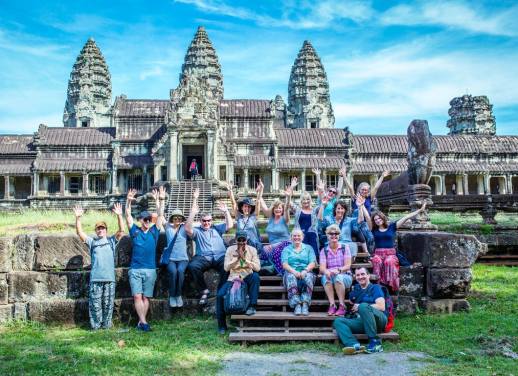
Cliona Elliott
Originally from Jersey (the tiny island in the English Channel), Cliona now lives in Melbourne, Australia. When she's not writing about all things travel for Intrepid, you'll find her chasing flavours, getting lost in local markets or waking up at a ridiculous time to watch the sunrise from the top of a mountain.
You might also like
Tips and hacks for train travel in europe, why train travel is the one experience you..., everything you need to know about a night..., mind your manners: dining etiquette around the world, 5 places to escape the crowds in italy..., is australia safe everything you need to know, 10 fun facts you might not know about..., explore these 7 tea rituals from around the..., 12 facts you probably don’t know about guatemala, the 7 best places to go on a..., 5 reasons to visit sri lanka in the....
- Travel Planning Guide
A Travel Comparison for Vacations, Honeymoons, and Tours Japan vs. China
Should you visit japan or china, which country is cheaper, china or japan.
Should I visit Japan or China? This is a popular question for many travelers. By figuring out which country is more expensive, you'll understand where you'll get more bang for your buck. A week in China can cost you about $555 (per person), while a week in Japan may cost you around $835. These differences become even more noticable if you plan to spend a longer time in the country. 10 days , two weeks , or even one month of travel to China or Japan can really add to your travel budget.
Accommodation is often cheaper in China compared to Japan ($34 vs. $57). Budget travelers usually stay in less expensive hostels and guest houses, while nicer hotels often appeal to families and upscale travelers.
Or, compare hostel and guesthouse prices between China and Japan to find the cheapest accommodation here: China hostels and Japan hostels .
When comparing food in Japan vs. China they are not just different in cuisine, but also in price. Meal and restaurant costs in Japan ($29) are often cheaper than China ($23).
- Japan Prices China Prices
- Average Daily Cost Per person, per day Japan $ 119 China $ 79
- Accommodation Hotel or hostel for one person Japan $ 57 China $ 34
- Accommodation Typical double-occupancy room Japan $ 114 China $ 68
- Local Transportation Taxis, local buses, subway, etc. Japan $ 17 China $ 16
- Food Meals for one day Japan $ 29 China $ 23
- Entertainment Entrance tickets, shows, etc. Japan $ 19 China $ 17
- Alcohol Drinks for one day Japan $ 15 China $ 11
- Water Bottled water for one day Japan $ 4.31 China $ 0.99
How much are flights to Japan and China?
The price of a plane ticket may help you decide which country you should visit.
Find a Hostel in Japan or China
Hostels, guest houses, and locally owned B&B's are often the cheapest form of accommodation.
Related Articles for Japan
Related articles for china, when is the best time to visit japan and china.

Why is Japan more expensive than China?
What are the most expensive and cheapest cities and regions in japan and china.
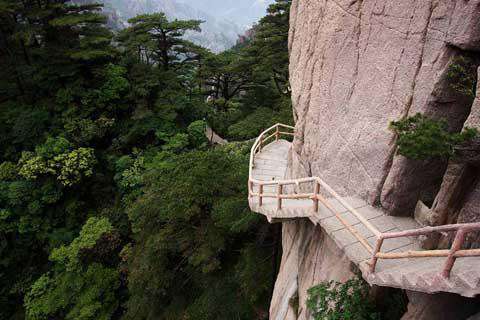
How you can save money when visiting Japan and China?
Subscribe to our newsletter.
By signing up for our email newsletter, you will receive occasional updates from us with sales and discounts from major travel companies , plus tips and advice from experienced budget travelers!

More Country Comparisons
Pin this page.
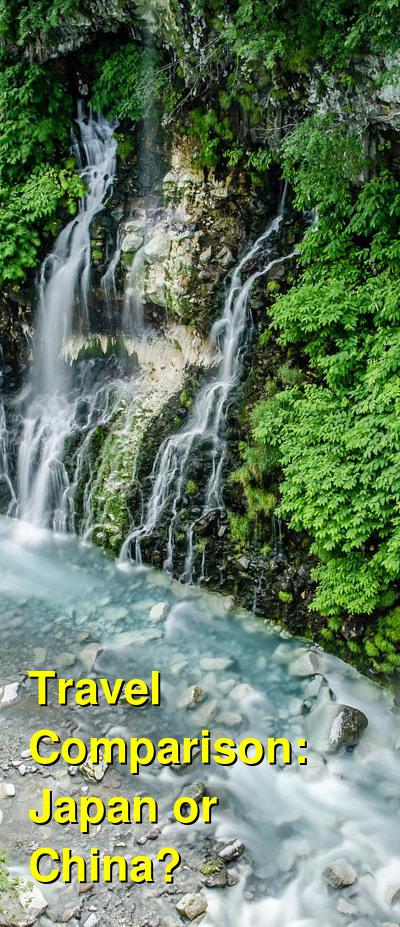
- Privacy / Terms of Use
- Activities, Day Trips, Things To Do, and Excursions
The Ministry of Foreign Affairs website uses JavaScript. Please turn on "JavaScript" and use it.

The Ninth Japan-China-ROK Trilateral Summit
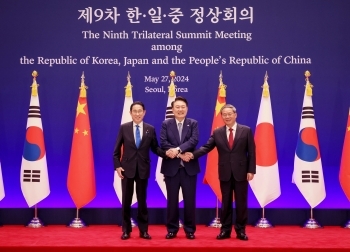
1 General remarks
The three leaders commemorated the 25th anniversary of the trilateral cooperation and welcomed the trilateral process being revitalized. Furthermore, the three leaders concurred on promoting future-oriented practical cooperation that has been developed in various areas, and on continuing their cooperation under Japan’s Chair. The three leaders also exchanged views on future trilateral cooperation as well as regional and international issues. In the opening remarks of the Summit, on the North Korea’s notice for a satellite launch, Prime Minister Kishida stated that such a launch, if conducted, would be a violation of UN Security Council Resolutions and urged North Korea not to conduct it.
2 Trilateral Cooperation
The three leaders reaffirmed the significance of the trilateral cooperation in the present day and concurred on promoting cooperation in the priority areas that the Republic of Korea proposed as the Chair. The three leaders also expressed their appreciation for the role that the Trilateral Cooperation Secretariat has played to date. Prime Minister Kishida stated that Japan, China and the ROK should put their heads together to lead the world to cooperation rather than division and confrontation through expanding the trilateral cooperation. Furthermore, Prime Minister Kishida explained Japan’s views on initiatives in the three areas, namely people-to-people exchanges, sustainable society, and cooperation with ASEAN, building upon the significance of the trilateral cooperation in the present day.
(1)People-to-People Exchanges A Multi-layerd people-to-people exchanges centered on youth, forging the future of the relations among the three countries is the foundation, which nurtures mutual understanding and trust toward the future, and it will also be the driving force to create new ideas to address challenges even in a testing period. Based on the recognition, Japan will continue to back up the promotion of the implementation of the programs such as “CAMPUS Asia,”an inter-university exchange program initiated among the three countries, which has expanded to encompass Southeast Asia. Japan also further promotes people-to-people exchanges through tourism. B Japan supports the ROK’s proposal to designate 2025-2026 as “the Year of Cultural Exchange” among the three countries and will enrich the Year of Cultural Exchange under Japan’s Chair.
(2)Sustainable Society It is beneficial for not only the three countries but also the international society to exhibit the model of sustainable society from East Asia through addressing common challenges in society and economics as well as the global challenges. Japan, together with the ROK and China, will turn challenges into chance including by advancing cooperation based on the Joint Statement on measures for pandemics as well as knowledge sharing on low birthrate and ageing society among the three countries as the ones facing new challenges ahead of others.
(3)Cooperation with ASEAN ASEAN plays a central role in regional stability and prosperity and also welcomes the revitalization of the trilateral process. It is thus more and more important for the three countries to cooperate with ASEAN for mainstreaming “ASEAN Outlook on the Indo-Pacific (AOIP)” in order to bring about stability and prosperity in the region. Under the framework of ASEAN plus three, Japan will cooperate with the ROK and China to further materialize the practical cooperation such as enhancing regional financial cooperation including establishing the rapid financing facility to address urgent balance of payment needs, arising including from natural disasters and other exogenous shocks, supporting start-ups for promoting sustainable development, and utilizing the perspective of Women, Peace and Security (WPS) in the areas including disaster risk reduction.
3 Regional and Global Situations
Prime Minister Kishida stated that protecting human dignity and maintaining and enhancing the free and open international order based on the rule of law are essential to ensure peace and prosperity in the region as well as the international society through leading the world to cooperation. Furthermore, Prime Minister Kishida explained Japan’s position on the situation in North Korea, Russia’s aggression against Ukraine, the situation in the Middle East, and regional and international economic cooperation.
(1)Korean Peninsula Prime Minister Kishida expressed serious concern over North Korea’s nuclear and missile activities and development of military cooperation between Russia and North Korea, and reconfirmed that the denuclearization of North Korea and the stability of the Korean Peninsula is the common interest of the three countries. Prime Minister Kishida stated that the three countries should urge North Korea to completely abandon its nuclear and ballistic missile programs in accordance with relevant United Nations Security Council resolutions. Prime Minister Kishida also asked for continued support of the leaders of the ROK and China for the immediate resolution of the abductions issue and gained their understanding.
(2)Situation in Ukraine Prime Minister Kishida stated that any unilateral attempt to change the status quo by force is never acceptable anywhere in the world, and that it is important to bring about a just and lasting peace. Prime Minister also stated that Japan will continue severe sanctions against Russia and strong support for Ukraine.
(3)Situation in the Middle East Prime Minister Kishida expressed serious concern about the critical humanitarian situation in the Gaza Strip, and explained that Japan has been making diplomatic efforts towards improving the situation and has been providing more than USD 100 million of assistance for the Palestinians. The three leaders concurred that they will make efforts towards resolving the Middle East Peace issue, sharing the importance of realization of a sustainable ceasefire and the support of a “two-state solution”. The leaders also confirmed that the peace and stability in the Middle East as a whole, is the common interest.
(4)Regional and Global Economic Cooperation The three leaders concurred that it is important for Japan, the ROK and China, whose GDPs account for more than 20% of the world’s GDP, to play a role to ensure sustainable and inclusive economic growth in the region, and that it is important to promote the trilateral cooperation in the area of intellectual property based on the joint statement issued today. Pointing out the importance of maintaining and strengthening free and fair international economic order, Prime Minister Kishida stated that Japan intends to have a candid exchange of views on how a future-oriented trilateral free trade agreement should be, including high-level economic disciplines among the three countries, which have deep ties in both trade and investment, aiming for an RCEP-plus agreement. Furthermore, Prime Minister Kishida welcomed the ROK’s initiatives in hosting the meetings such as the AI Seoul Summit and explained Japan’s initiatives toward realizing safe, secure and trustworthy AI, including through the Hiroshima AI Process. Prime Minister Kishida also expressed his hope for the three countries to cooperate with each other to the success of the 2025 APEC Economic Meeting in the ROK and the Expo 2025, Osaka, Kansai, hosted by Japan.
Related Links
- Prime Minister Kishida Attends the Ninth Japan-China-ROK Trilateral Summit Meeting (May 26-27, 2024)
- Japan-China-ROK Trilateral Cooperation
- Japan-China Relations
- Japan-Republic of Korea Relations
- Account Details
- Newsletters
- Group Subscription
Slow return of Chinese tourists stalls Japan's hotel recovery
Occupancy rate drops below 70% for the first time in four months
TOKYO -- The Japanese hospitality industry's recovery from COVID-19 has reached a standstill, despite government travel incentives and an increase in foreign tourists, as travelers from China return slowly.
Japan's average occupancy rate for hotel rooms fell 10 points on the month to 64.2% for January, according to U.S. research firm STR, falling below 70% for the first time since September.
Japan opens up to Chinese tourists, but can it handle the rush?
Cruise ships return to japanese ports after 3-year covid gap, japan hotel room prices soar on inbound travel recovery, marriott and hilton see china tourism rebound lifting growth in 2023, hotels in japan offer luxury like $10,000-a-night frank lloyd wright suite, thailand's tourism future darkened by air pollution, skiing is hot in china -- even indoors -- on olympic boom, passports can say a lot about a country, latest on travel & leisure, macao expo highlights casinos' search for post-pandemic growth, accor to open hotel in indonesia's new capital 'before jokowi leaves', singapore begins second phase of casino resort development, sponsored content, about sponsored content this content was commissioned by nikkei's global business bureau..
Nikkei Asian Review, now known as Nikkei Asia, will be the voice of the Asian Century.
Celebrate our next chapter Free access for everyone - Sep. 30
- Election 2024
- Entertainment
- Newsletters
- Photography
- Personal Finance
- AP Investigations
- AP Buyline Personal Finance
- AP Buyline Shopping
- Press Releases
- Israel-Hamas War
- Russia-Ukraine War
- Global elections
- Asia Pacific
- Latin America
- Middle East
- Election Results
- Delegate Tracker
- AP & Elections
- Auto Racing
- 2024 Paris Olympic Games
- Movie reviews
- Book reviews
- Personal finance
- Financial Markets
- Business Highlights
- Financial wellness
- Artificial Intelligence
- Social Media
South Korean, Chinese and Japanese leaders discuss thorny topics and ways to boost cooperation
Leaders of South Korea, China and Japan will meet in Seoul on Monday for their first trilateral talks in more than four years. (AP video shot by Yong-ho Kim)
Chinese Premier Li Qiang, left, waves to media members before getting into a car as Kim Hong-kyun, right, South Korean 1st vice foreign minister, follows behind at the Seoul airport in Seongnam, South Korea, Sunday, May 26, 2024, as the premier arrives for a trilateral meeting. Leaders of South Korea, China and Japan will meet next week in Seoul for their first trilateral talks since 2019. (AP Photo/Lee Jin-man)
- Copy Link copied
Chinese Premier Li Qiang waves as he arrives for a trilateral meeting at the Seoul airport in Seongnam, South Korea, Sunday, May 26, 2024. Leaders of South Korea, China and Japan will meet next week in Seoul for their first trilateral talks since 2019. (AP Photo/Lee Jin-man)
Chinese Premier Li Qiang, second right, is welcomed by Kim Hong-kyun, right, South Korean 1st vice minister, as the premier arrives for a trilateral meeting, at the Seoul airport in Seongnam, South Korea, Sunday, May 26, 2024. Leaders of South Korea, China and Japan will meet next week in Seoul for their first trilateral talks since 2019. (AP Photo/Lee Jin-man)
Japanese Prime Minister Fumio Kishida, left, shakes hands with Chinese Premier Li Qiang before their meeting in Seoul, South Korea, Sunday, May 26, 2024. (Daisuke Suzuki/Kyodo News via AP)
Chinese Premier Li Qiang speaks during a meeting with Japanese Prime Minister Fumio Kishida in Seoul, South Korea, Sunday, May 26, 2024. (Daisuke Suzuki/Kyodo News via AP)
South Korean President Yoon Suk Yeol, right, shakes hands with Japanese Prime Minister Fumio Kishida during a meeting at the Presidential Office in Seoul, South Korea, Sunday, May 26, 2024. (AP Photo/Ahn Young-joon, Pool)
Chinese Premier Li Qiang, center left, is welcomed by Kim Hong-kyun, right, South Korean 1st vice foreign minister, as the premier arrives for a trilateral meeting at the Seoul airport in Seongnam, South Korea, Sunday, May 26, 2024. Leaders of South Korea, China and Japan will meet next week in Seoul for their first trilateral talks since 2019. (AP Photo/Lee Jin-man)
Chinese Premier Li Qiang arrives for a trilateral meeting, at the Seoul airport in Seongnam, South Korea, Sunday, May 26, 2024. Leaders of South Korea, China and Japan will meet next week in Seoul for their first trilateral talks since 2019. (AP Photo/Lee Jin-man)
Japanese Prime Minister Fumio Kishida, second from right, speaks to South Korean President Yoon Suk Yeol, second from left, during a meeting at the Presidential Office in Seoul, South Korea, Sunday, May 26, 2024. (AP Photo/Ahn Young-joon, Pool)
Chinese Premier Li Qiang waves to media members upon his arrival for trilateral meetings at the Seoul airport in Seongnam, South Korea, Sunday, May 26, 2024. Leaders of South Korea, China and Japan will meet next week in Seoul for their first trilateral talks since 2019. (AP Photo/Lee Jin-man)
Japanese Prime Minister Fumio Kishida, third left, holds a meeting with Chinese Premier Li Qiang, third right, in Seoul, South Korea, Sunday, May 26, 2024. (Daisuke Suzuki/Kyodo News via AP)
Chinese Premier Li Qiang waves to media members before getting into a car as Kim Hong-kyun, right, South Korean 1st vice foreign minister, follows behind at the Seoul airport in Seongnam, South Korea, Sunday, May 26, 2024, as the premier arrives for a trilateral meeting. Leaders of South Korea, China and Japan will meet next week in Seoul for their first trilateral talks since 2019. (AP Photo/Lee Jin-man)
Japanese Prime Minister Fumio Kishida speaks during a meeting with Chinese Premier Li Qiang in Seoul, South Korea, Sunday, May 26, 2024. (Daisuke Suzuki/Kyodo News via AP)
South Korean President Yoon Suk Yeol, right, and Japanese Prime Minister Fumio Kishida gesture during a meeting at the Presidential Office in Seoul, South Korea, Sunday, May 26, 2024. (AP Photo/Ahn Young-joon, Pool)
South Korean President Yoon Suk Yeol, left, and Japanese Prime Minister Fumio Kishida move their positions during a meeting at the Presidential Office in Seoul, South Korea, Sunday, May 26, 2024. (AP Photo/Ahn Young-joon, Pool)
SEOUL, South Korea (AP) — The Japanese and South Korean leaders raised sensitive topics like Taiwan, North Korea and the South China Sea as well as ways to boost cooperation when they individually met China’s premier Sunday on the eve of a fuller trilateral meeting.
It was unclear how serious discussions the three leaders had on those thorny issues, which are not among the official agenda items for Monday’s three-way gathering in Seoul, the first of its kind in more than four years.
No major announcement is expected from the meeting, but observers say that just resuming the highest-level talks among the three Northeast Asian neighbors is a good sign and suggests they are intent on improving relations. Their trilateral meeting was supposed to happen annually but it had stalled since the last one in December 2019 because of the COVID-19 pandemic and complex ties among the three countries.
After meeting Chinese Premier Li Qiang, Japanese Prime Minister Fumio Kishida told reporters that he expressed serious concerns about the situations in the South China Sea, Hong Kong and China’s northwestern Xinjiang region. He said Japan is closely monitoring developments on self-governed Taiwan.
He referred to China’s military assertiveness in the South China Sea, clampdowns of pro-democracy movements in Hong Kong and human rights abuses against minorities in Xinjiang. Last week, China also launched a large military exercise around Taiwan to show its anger over the inauguration of the island’s new president who refuses to accept its insistence that Taiwan is part of China.
During a separate meeting with Li, South Korean President Yoon Suk Yeol, on his part, asked China, as a permanent member of the U.N. Security Council, to contribute to promoting peace on the Korean Peninsula, while speaking about North Korea’s nuclear program and its deepening military ties with Russia, according to Yoon’s office.
Yoon’s office said Yoon and Kishida in their separate meeting expressed worries about North Korea’s nuclear program and agreed to strengthen their cooperation with the United States.
South Korea, Japan and the U.S. have long urged China — North Korea’s major ally and economic pipeline — to use its leverage to persuade the North to abandon its nuclear ambitions. But China is suspected of avoiding fully enforcing U.N. sanctions on North Korea and sending clandestine aid shipments to help its impoverished neighbor stay afloat.
The three leaders also discussed how to bolster economic and other cooperation.
Yoon and Li agreed to launch a new South Korean-Chinese dialogue channel involving senior diplomats and defense officials in mid-June. They also agreed to restart negotiations to expand the free trade agreement and reactivate dormant bodies on personnel exchanges, investments and other issues, according to Yoon’s office.
Chinese state media reported Li told Yoon that the two countries should safeguard the stability of their deeply intertwined industrial and supply chains and resist turning economic and trade issues into political and security-related issues.
Kishida said he and Li reaffirmed Japan and China will seek progress on various areas to promote mutually beneficial relations. Kishida and Yoon also said they agreed to further strengthen ties, which have warmed significantly since last year following an earlier setback over issues related to Japan’s 1910-45 colonial rule of the Korean Peninsula.
South Korean officials said that a joint statement after Monday’s trilateral meeting will cover the leaders’ discussion on cooperation in areas like people-to-people exchanges, climate change, trade, health issues, technology and disaster responses.
The three Asian nations are important trading partners and their cooperation is key to promoting regional peace and prosperity. They together make up about 25% of global gross domestic product. But the three countries have been repeatedly embroiled in bitter disputes over a range of historical and diplomatic issues originating from Japan’s wartime atrocities. China’s rise and a U.S. push reinforce its Asian alliances have also significantly impacted their three-way ties in recent years.
Experts say South Korea, China and Japan now share a need to improve ties. South Korea and Japan want better ties with China because it is their biggest trading partner. China, for its part, likely believes a further strengthening of the South Korea-Japan-U.S. cooperation would hurt its national interests.
China, meanwhile, has always sent its premier, the country’s No. 2 official, to the trilateral leaders’ meeting since its first session in 2008. Observers say China earlier argued that under then-collective leadership, its premier was chiefly in charge of economic affairs and best suited to attend the meeting, which largely focuses on economic issues.
But they say China may face more demands for President Xi Jinping to attend because he has concentrated power in his hands and defied the norms of collective leadership.
Associated Press writers Mari Yamaguchi in Tokyo and Simina Mistreanu in Taipei, Taiwan contributed to this report.
- My View My View
- Following Following
- Saved Saved
Japan’s luxury boom sparks wishful China thinking
- Medium Text
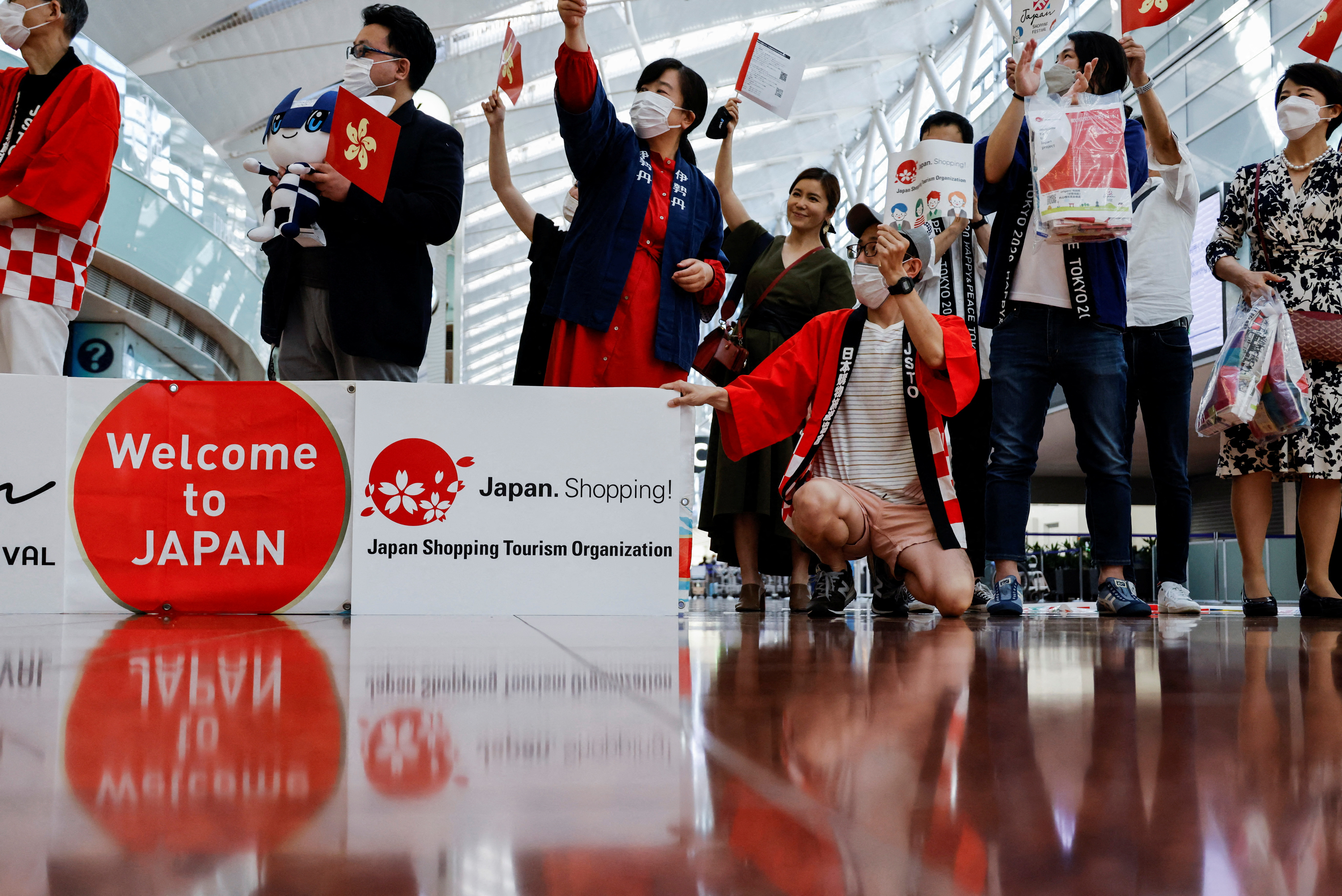
For more insights like these, click here New Tab , opens new tab to try Breakingviews for free.
Editing by Lisa Jucca and Oliver Taslic
Breakingviews Reuters Breakingviews is the world's leading source of agenda-setting financial insight. As the Reuters brand for financial commentary, we dissect the big business and economic stories as they break around the world every day. A global team of about 30 correspondents in New York, London, Hong Kong and other major cities provides expert analysis in real time. Sign up for a free trial of our full service at https://www.breakingviews.com/trial and follow us on Twitter @Breakingviews and at www.breakingviews.com . All opinions expressed are those of the authors.

Thomson Reuters
Katrina Hamlin is global production editor, based in Hong Kong. She is also a columnist, writing on topics including autos and electric vehicles, as well as the gambling industry in Macau and Asia. Before joining Reuters in 2012, Katrina was deputy managing editor of Shanghai Business Review magazine. She graduated from the University of Oxford with an MA in Classics, and earned a Masters of Journalism with distinction from the University of Hong Kong.

Breakingviews Chevron
Bill ackman hitches ride on meme-stock bandwagon.
If there’s no such thing as bad publicity, Bill Ackman is in a sweet spot. The billionaire hedge fund manager has parlayed his newfound social media clout into a rich valuation for the Pershing Square Capital Management firm he started. The situation gives off a meme-stock vibe.
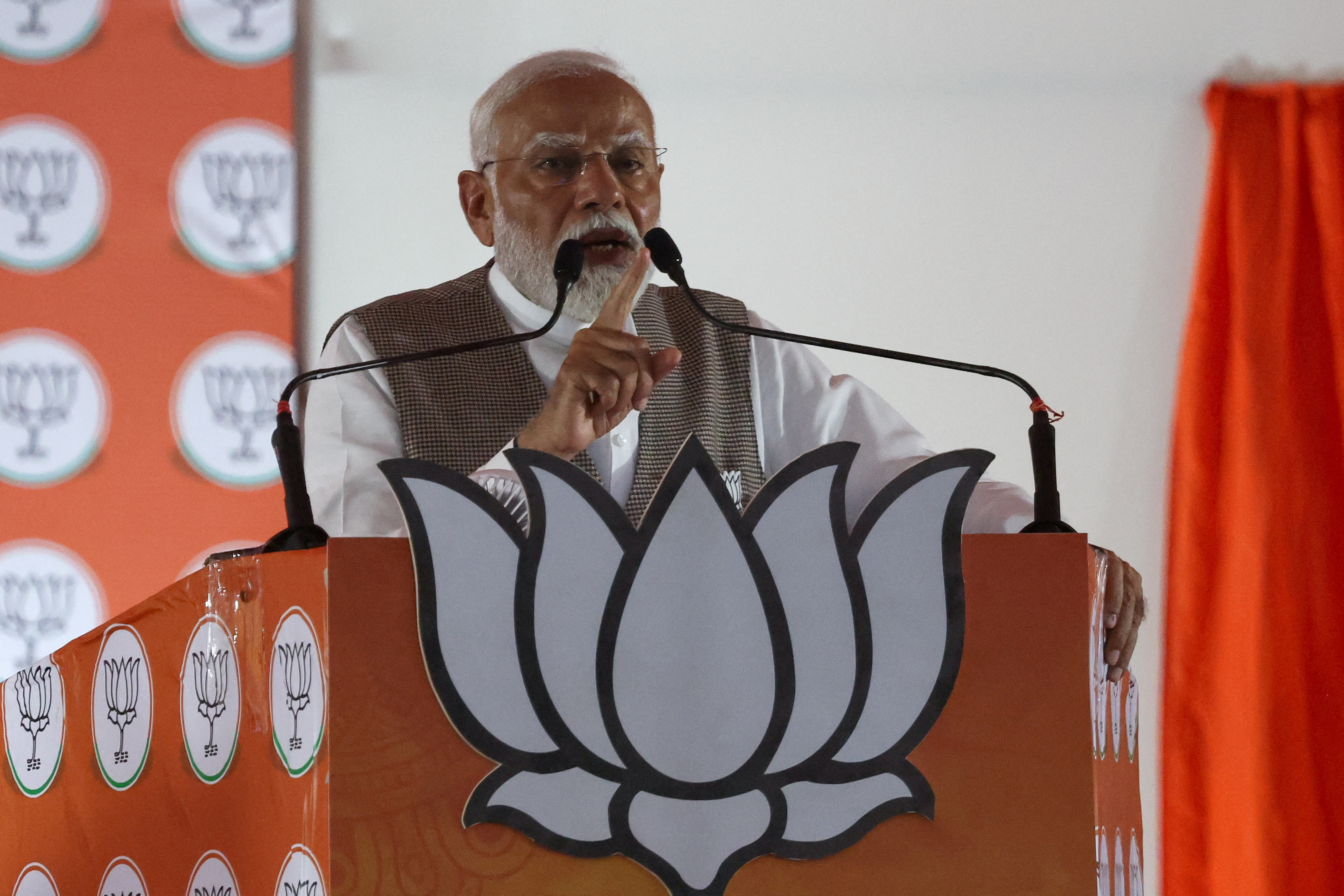
China Discusses Supply Chains With US Allies Japan, South Korea
- Yoon holding talks in Seoul with China’s Li, Japan’s Kishida
- Summits were put on hold due to Covid and political tensions

China, Japan and South Korea sought to revitalize cooperation on security and economic matters at their first formal three-way summit since 2019, with Premier Li Qiang looking to persuade his neighbors to work with Beijing on keeping supply chains stable.
Li asked Japanese Prime Minister Fumio Kishida and South Korean President Yoon Suk Yeol during their three-way talks Monday in Seoul to reject playing bloc politics and decoupling from China, the official Xinhua News Agency reported.
- Subscribe Digital Print

- China geopolitics
- Fumio Kishida
- Japan crime
- Latest News
- Deep Dive Podcast
Today's print edition
Home Delivery
- Crime & Legal
- Science & Health
- More sports
- CLIMATE CHANGE
- SUSTAINABILITY
- EARTH SCIENCE
- Food & Drink
- Style & Design
- TV & Streaming
- Entertainment news
Japanese airlines' flights from China almost fully booked for holiday

Japanese airlines' flights from China to Japan are almost fully booked during an eight-day holiday that began Friday, the airlines said, despite Chinese media reports last month that Japan-bound trips had been canceled following the release of treated radioactive water from the crippled Fukushima nuclear power plant into the sea.
"A high percentage of seats on flights from China to Japan have been reserved and we don't see the impact from the release of the treated water," an official from a major Japanese airline said.
Earlier this week, Ichiro Takahashi, chief of the Japan Tourism Agency, told reporters the impact on the number of Chinese travelers to Japan by the release of the treated radioactive water, which commenced on Aug. 24, "has been limited," as the agency inquired at travel agencies in China about travel reservations for the holiday.
In late August, the Global Times, a tabloid affiliated with China's ruling Communist Party, said several travel agencies have reported the cancellation of Japan-bound trips, with many companies planning to reduce their promotions for the holidays.
Japan-bound Chinese group tours resumed in August after a hiatus of more than three years caused by the COVID-19 pandemic.
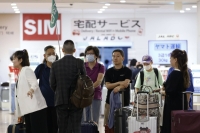
In a time of both misinformation and too much information, quality journalism is more crucial than ever. By subscribing, you can help us get the story right.
Advertisement
After Trump’s Conviction, a Wary World Waits for the Fallout
Already braced for uncertainty about the U.S. election, countries in Europe and Asia are now even more unclear about the future of American diplomacy.
- Share full article

By Hannah Beech and Paul Sonne
- May 31, 2024
The world does not vote in American presidential elections. Nor do its jurors play a part in the American judicial system. Nevertheless, the conviction of Donald J. Trump on all 34 felony counts in a hush-money trial in a New York court on Thursday has again made clear how consequential what happens in the United States is for the rest of the planet.
Many America-watchers are grappling with the same questions posed by people in the United States: Can Mr. Trump still run for president? (Yes.) And if so, will the guilty verdicts cut into the support from his political base? (Unclear.)
Foreign observers also began wondering if Mr. Trump, already a volatile force, would become even less likely to stay within the guardrails of normal politics and diplomacy if he won the presidency again in November.
Mr. Trump’s supporters in anti-immigrant, right-wing nationalist circles abroad quickly jumped to his defense. Viktor Orban, Hungary’s Kremlin-friendly prime minister, called Mr. Trump “a man of honor” in a post on X and said the American people should deliver their own verdict in November.
Matteo Salvini, Italy’s deputy prime minister and the leader of the hard-right League party, expressed “solidarity and full support,” and called Mr. Trump a “victim of judicial harassment.”
“This verdict is a disgrace,” Nigel Farage, the pro-Brexit campaigner and Trump supporter, who is honorary president of Reform UK, a small right-wing party in Britain, wrote on social media. “Trump will now win big.”
President Vladimir V. Putin of Russia did not immediately respond to the verdict but has seized on the situation more broadly to undermine American influence. Mr. Putin last year called the various proceedings against Mr. Trump political “ persecution ” and said they had revealed the “rottenness of the American political system, which cannot pretend to teach others about democracy.”
His spokesman, Dmitri S. Peskov, reiterated the point on Friday in response to the verdict, saying it was clear to the entire world that the U.S. authorities were trying to eliminate political rivals “by all possible legal and illegal means.”
The convictions by a Manhattan jury come as the question of American engagement has become central in several global crises.
In Ukraine, the war effort against Russia has been stymied after Republicans in Congress delayed American military aid for months.
In Europe, leaders reliant on the United States for their defense are jittery about a return to a more acrimonious relationship with Washington and a possible withdrawal of American support for hardening defenses against Russia.
In Asia, where the Biden administration perceives a growing Chinese threat and worries about a possible invasion of Taiwan, American allies are concerned about the sanctity of defense treaties that have long girded the regional security order.
On the campaign trail, Mr. Trump has said he would encourage Russia to attack any NATO member that doesn’t pay sufficiently for its defense and has questioned whether the United States should defend South Korea, a treaty ally that hosts a large American military presence. He is considering the Ohio senator J.D. Vance, one of Washington’s most vociferous opponents of military aid for Ukraine, as a possible running mate.
Foreign analysts worry that Mr. Trump’s favored currency, unpredictability, could again shake up the global order.
Concern about his possible return to the White House is particularly palpable in Germany, the object of Mr. Trump’s ire for much of his first term and the host of more than 35,000 U.S. troops.
Andrea Römmele, vice president of the Hertie School, a public policy-focused graduate school in Berlin, said many Germans watching the Trump verdict were relieved to see that even a former president was not above the law in the United States. But she said Germans remained very anxious about a Trump victory.
“I think everyone is much more prepared to think the unthinkable,” she said.
Prime Minister Donald Tusk of Poland, whose right-wing domestic opponents accuse him of using the judiciary to settle political scores, hailed the conviction of Mr. Trump in New York as “an American lesson” for Polish politicians.
“The law determines guilt and punishment, regardless of whether the perpetrator is a president or a minister,” Mr. Tusk said in a message posted on X. A veteran centrist, Mr. Tusk took office after an October election that ousted a nationalist government that cultivated close ties with Mr. Trump during and after his time in the White House.
Still, on Friday, most foreign governments, forced to surf every shift in the American political mood, reacted cautiously.
“I would like to refrain from commenting on matters related to judicial procedures in other countries,” Yoshimasa Hayashi, Japan’s chief cabinet secretary, said at a news conference in Tokyo on Friday.
In Britain, where a national election campaign is underway, Prime Minister Rishi Sunak refused to discuss the Trump case. His Labour Party opponent, Keir Starmer, a former top prosecutor, said he respected the court’s decision and called the situation unprecedented.
“Ultimately whether he is elected president will be a matter for the American people and obviously, if we’re privileged to come in to serve, we would work with whoever they choose as their president,” Mr. Starmer told BBC Radio Scotland.
Mao Ning, a spokeswoman for China’s foreign ministry, declined to comment on the verdict. She said she hoped whoever was elected president would “be committed to developing healthy and stable China-U. S. relations.”
The possibility of Mr. Trump’s return to the White House is a source of anxiety for U.S. allies in Asia that rely on Washington for their defense.
When Prime Minister Fumio Kishida of Japan made a state visit to Washington in April, President Biden called relations between the countries the most important bilateral alliance in the world. With American concern rising over China’s expanding military footprint, Mr. Biden has strengthened American defense partnerships with Japan, South Korea, the Philippines and others in Asia.
By contrast, while president, Mr. Trump called for Japan, which hosts more than 50,000 American troops on its soil, to pay $8 billion for the upkeep of American bases there. (It never happened.)
Still, the fundamental tension in regional geopolitics — the contest between the United States and China — will continue no matter who wins the American presidential election.
“Beijing has no illusion about Trump or Biden, given their anti-China solid stance,” said Lau Siu-kai, an adviser to the Chinese government on Hong Kong policy. “Beijing is all set for a more intense confrontation with the U.S. over technology, trade and Taiwan.”
Officials in China’s embassy in the United States and its consulates around the country are most likely scrambling to assess how the verdict could affect the election, said Willy Lam, an analyst of Chinese politics at the Jamestown Foundation in Washington.
“The majority of Xi Jinping’s advisers now think a Trump presidency might be worse for U.S.-China relations,” Mr. Lam said of China’s top leader. “If Trump were to win, given the now peculiar circumstances of his victory, he might gravitate towards unpredictable actions to assert his authority.”
There is a sense in Asia that the region is perennially overlooked and underappreciated by U.S. presidents, particularly as crises in Europe and the Middle East have monopolized Mr. Biden’s attention. That sentiment was also felt acutely during Mr. Trump’s presidency, and for American partners in Asia it was made worse by his affinity for regional strongmen.
In addition to occasional expressions of admiration for Mr. Putin and Kim Jong-un of North Korea, Mr. Trump invited to the White House a former army chief who led a coup in Thailand and installed himself as prime minister. Mr. Trump drew accolades from Rodrigo Duterte, formerly the president of the Philippines and now under investigation by the International Criminal Court over his deadly war on drugs.
The Philippines is now led by the son of the longtime dictator Ferdinand E. Marcos, who died in exile in Hawaii. He has reoriented the country away from China back toward the United States.
In at least one regard — the prosecution of former leaders — the rest of the world is far ahead of the United States. South Korea, where four former presidents have been convicted of corruption and abuse of power, has made something of a national sport of imprisoning disgraced leaders. The former French presidents Nicolas Sarkozy and Jacques Chirac were convicted of corruption.
Jacob Zuma, the former president of South Africa, has been charged with money laundering, among other crimes. And Luiz Inácio Lula da Silva was sentenced to years in prison for corruption after leading Brazil. His convictions were eventually annulled. He is again president of the country.
Reporting was contributed by Stephen Castle, Elisabetta Povoledo, Roger Cohen, Zixu Wang, Andrew Higgins, Camille Elemia , Choe Sang-Hun , Motoko Rich , Alexandra Stevenson , Sui-Lee Wee and Sameer Yasir .
An earlier version of this article misstated the length of Rodrigo Duterte’s term in office. It was six years, not eight years.
How we handle corrections
Hannah Beech is a Times reporter based in Bangkok who has been covering Asia for more than 25 years. She focuses on in-depth and investigative stories. More about Hannah Beech
Paul Sonne is an international correspondent, focusing on Russia and the varied impacts of President Vladimir V. Putin’s domestic and foreign policies, with a focus on the war against Ukraine. More about Paul Sonne
Our Coverage of the Trump Hush-Money Trial
Guilty Verdict : Donald Trump was convicted on all 34 counts of falsifying records to cover up a sex scandal that threatened his bid for the White House in 2016, making him the first American president to be declared a felon .
What Happens Next: Trump’s sentencing hearing on July 11 will trigger a long and winding appeals process , though he has few ways to overturn the decision .
Reactions: Trump’s conviction reverberated quickly across the country and around the world . Here’s what voters , New Yorkers , Republicans , Trump supporters and President Biden had to say.
The Presidential Race : The political fallout of Trump’s conviction is far from certain , but the verdict will test America’s traditions, legal institutions and ability to hold an election under historic partisan tension .
Making the Case: Over six weeks and the testimony of 20 witnesses, the Manhattan district attorney’s office wove a sprawling story of election interference and falsified business records.
Legal Luck Runs Out: The four criminal cases that threatened Trump’s freedom had been stumbling along, pleasing his advisers. Then his good fortune expired .

COMMENTS
A two-week trip to China and Japan costs around US$7,500-9,000. Private tour costs in China are about US$200-250 per day per person, and the costs in Japan are US$350-500 per day per person, including 4-star hotels, tickets for attractions, private cars and private guides. Prices can double in peak season, especially airfares and hotels.
Discover world-famous landmarks such as the Great Wall of China and historical cities such as Xi'an and Kyoto, and witness the vibrant cultures of East Asia, as you experience the best of Japan and China on a 16-day leisurely tour (easily adapted to be a 2-week or 3-week tour). It covers iconic cities like Tokyo, Hakone, Kyoto, Nara, Beijing ...
18 Days 17 Nights | from US $6298.00. Discover China and Japan in the gorgeous cherry blossom season, including Hiroshima and Shikoku Island, in an itinerary that includes top historic must-sees, breathtaking natural wonders, and delicious native cuisine. Start Date.
2:58. The number of foreign visitors to Japan recovered to 86% of pre-pandemic levels in August with Chinese tourists adding a boost, according to Japan's National Tourism Organization. The ...
Japan scrapped a blanket testing requirement on travelers from China at 12:01 a.m. on Wednesday, a restriction that had been imposed since Dec. 30 in response to a surge in coronavirus cases there.
China lifted its ban on group tours to Japan on Aug. 10 after a suspension of more than three years due to the novel coronavirus pandemic. The decision announced by China's Ministry of Culture and ...
TOKYO, May 17 (Reuters) - Visitors to Japan rose to a post-pandemic high of almost 2 million in April, official data showed on Wednesday, benefiting from a relaxation of travel restrictions in China.
Dec 27, 2022. Japan will tighten its border controls for travelers from China on Friday, as the latter nation is seeing a surge in COVID-19 infections, Prime Minister Fumio Kishida said Tuesday ...
Sep 20, 2023. The number of foreign visitors to Japan recovered to 86% of pre-pandemic levels in August with Chinese tourists adding a boost, according to the National Tourism Organization. The ...
Beijing's 'COVID zero' policy restricts travelers from leaving China — far and away Japan's largest source of foreign tourist revenue.
TOKYO -- The Chinese government released a new list of destination countries for outbound group tourism, including Japan, South Korea, Australia, the U.S. and the U.K. on Thursday, a move that ...
The official site of Japan National Tourism Organization is your ultimate Japan guide with tourist information for Tokyo, Kyoto, Osaka, Hiroshima, Hokkaido and other top Japan holiday destinations. We offer travel information to make your Japan travel more comfortable and enjoyable.
HIROMOTO DEGUCHI, Nikkei staff writer January 13, 2023 10:45 JST. TOKYO -- The end of China's zero-COVID policy signaled the possibility of a renewed influx of Chinese travelers to Japan, but it ...
Almost 10 million Chinese visited in 2019, five times the number of Americans who went to Japan. Because of their numbers, they contributed the most to the Japanese economy, though visitors from Australia and some other countries spent more per visitor. According to Ctrip, the Chinese online travel giant, the top activities for Chinese visitors ...
But since Japan eased its own pandemic border controls late last year, the number of Chinese tourists has only recovered to about 20% of 2019 levels, partly because of China's delay in adding ...
For instance, Chinese travelers made up 28 percent of inbound tourism in Thailand, 30 percent in Japan, and 16 percent of non-EU visitors to Germany. 8 United Nations World Tourism Organization (UNWTO) database. Leisure travel was the biggest driver of China's outbound travel, representing 65 percent of travelers in 2019.
However, Japan overall has more choice. There are roughly 26,000 properties listed on Booking.com for Japan, whereas in China, there are only around 12,250 properties. Both countries have one to five-star hotels available, but China has a lower proportion of one-star hotels and a much higher proportion of five-star hotels.
China has recovered its position as top spender on international tourism in 2023 as Asia and the Pacific consolidates its recovery from the impacts of the pandemic. In 2022, the list of top spenders was headed by the United States. ... Australia, Canada, Japan, Germany, Saudi Arabia, Macao (China), India and Mexico which complete the top 15 ...
GO ON A REAL FOOD ADVENTURE IN JAPAN. Chinese wonton soup. China is massive - and so nearly every region has its own cooking style. Generally, Chinese food tends to be heavier than Japanese with more spices, chilli and oil. It's also meatier with lots of beef, pork and duck, though seafood and tofu are also popular.
10 days, two weeks, or even one month of travel to China or Japan can really add to your travel budget. Accommodation is often cheaper in China compared to Japan ($34 vs. $57). Budget travelers usually stay in less expensive hostels and guest houses, while nicer hotels often appeal to families and upscale travelers.
China has lifted pandemic-era restrictions on group tours for more countries, including key markets such as the United States, Japan, South Korea and Australia in a potential boon for their ...
Visitors to Japan rose to a post-pandemic high of almost 2 million in April, official data showed on Wednesday, benefiting from a relaxation of travel restrictions in China. The number of foreign ...
The 9th Japan-China-ROK Summit was held in Seoul, the Republic of Korea, for approximately 75 minutes, commencing at 10 am on May 27th. ... Japan also further promotes people-to-people exchanges through tourism. B Japan supports the ROK's proposal to designate 2025-2026 as "the Year of Cultural Exchange" among the three countries and will ...
TOKYO -- The Japanese hospitality industry's recovery from COVID-19 has reached a standstill, despite government travel incentives and an increase in foreign tourists, as travelers from China ...
Updated 6:58 AM PDT, May 26, 2024. SEOUL, South Korea (AP) — The Japanese and South Korean leaders raised sensitive topics like Taiwan, North Korea and the South China Sea as well as ways to boost cooperation when they individually met China's premier Sunday on the eve of a fuller trilateral meeting. It was unclear how serious discussions ...
A 4,300-year-old Japanese temple has created a female pop group and is employing maids wearing Buddhist-style outfits to attract visitors. The innovation has ignited a mix of curiosity and ...
Members from Japan's shopping and tourism companies greet a group of tourists from Hong Kong upon their arrival at Haneda airport in Tokyo, Japan, June 26, 2022.
May 26, 2024 at 11:10 PM PDT. Listen. 4:36. China, Japan and South Korea sought to revitalize cooperation on security and economic matters at their first formal three-way summit since 2019, with ...
Earlier this week, Ichiro Takahashi, chief of the Japan Tourism Agency, told reporters the impact on the number of Chinese travelers to Japan by the release of the treated radioactive water, which ...
With American concern rising over China's expanding military footprint, Mr. Biden has strengthened American defense partnerships with Japan, South Korea, the Philippines and others in Asia.